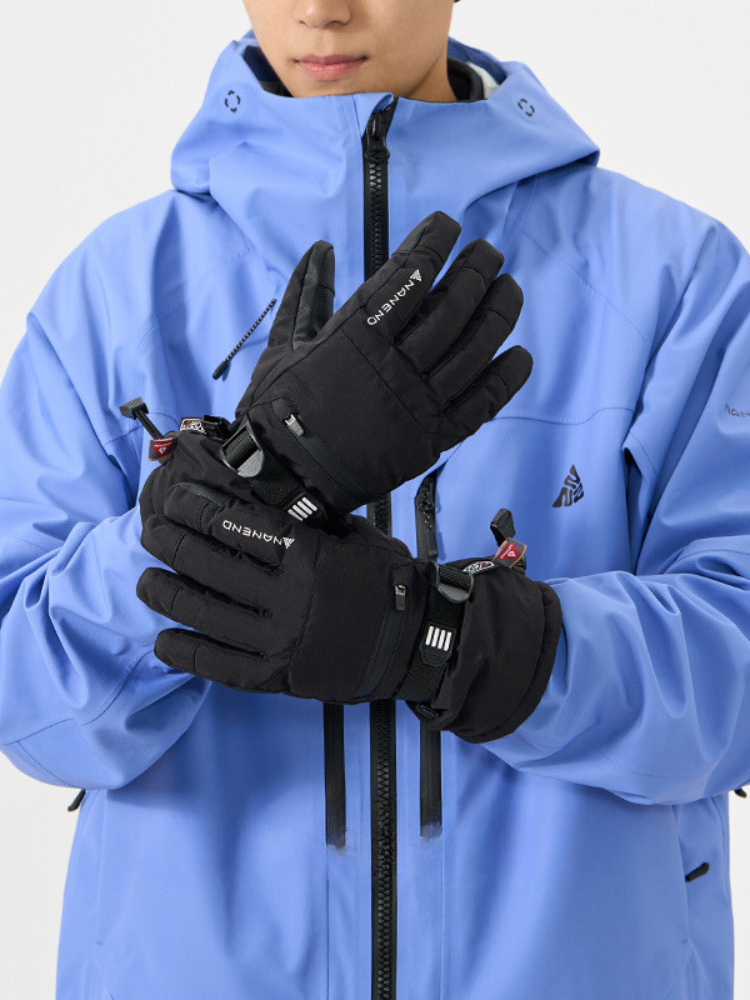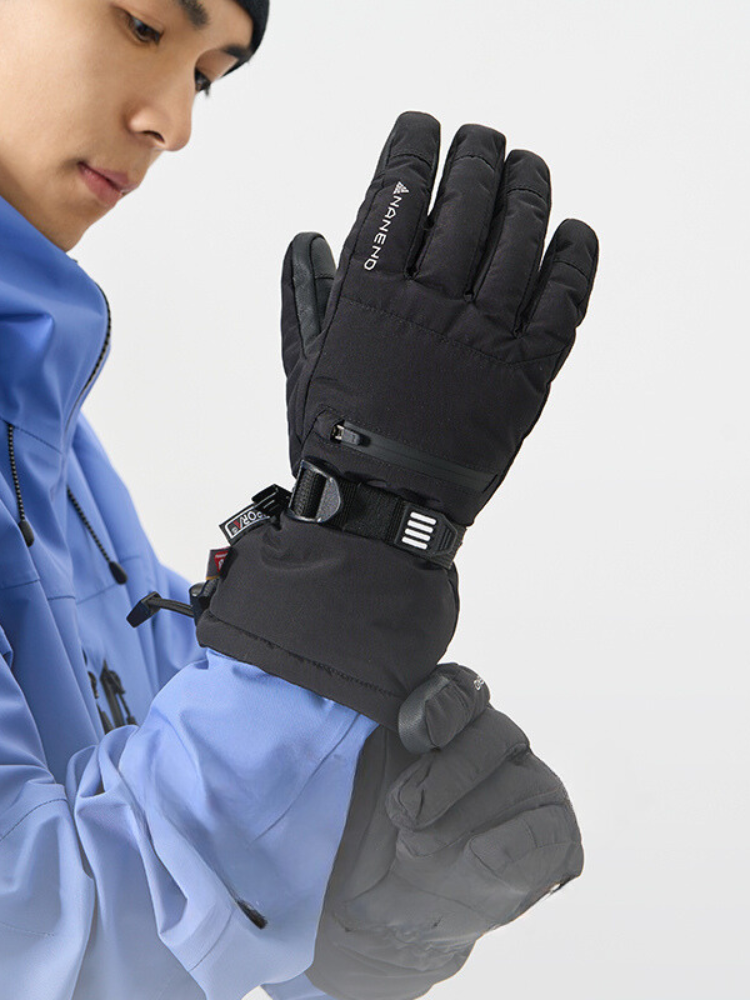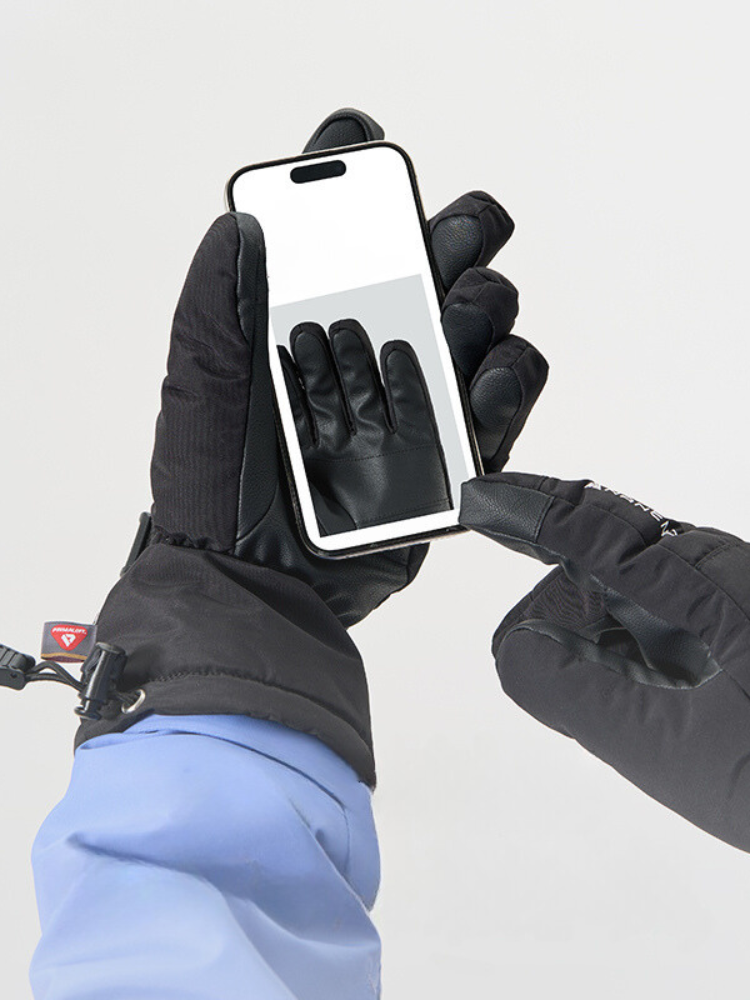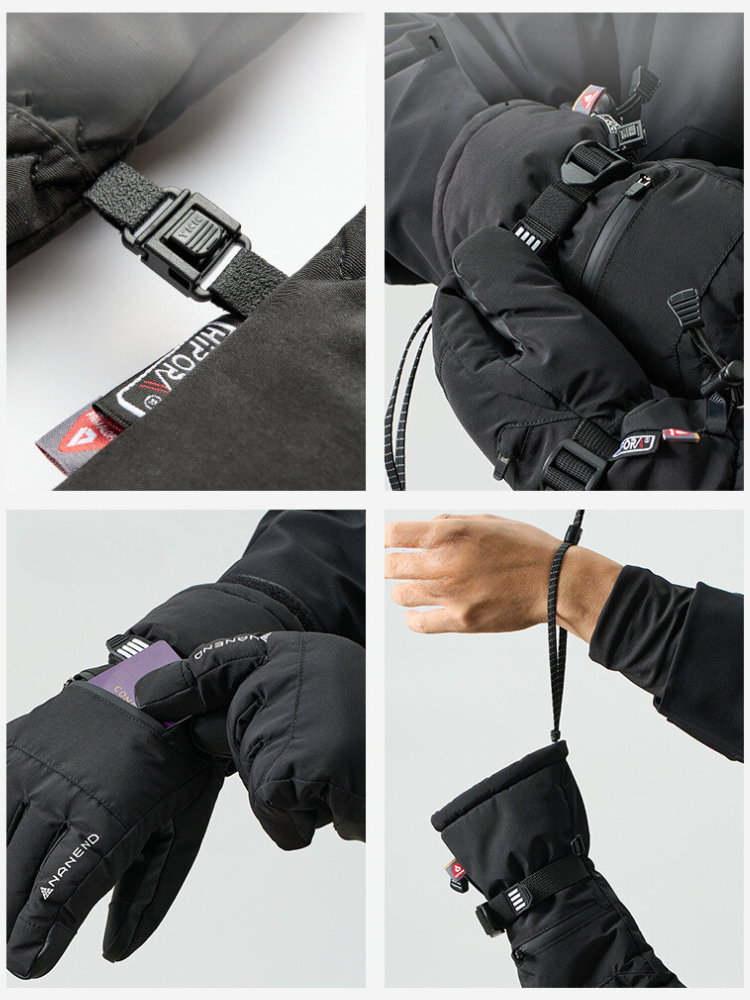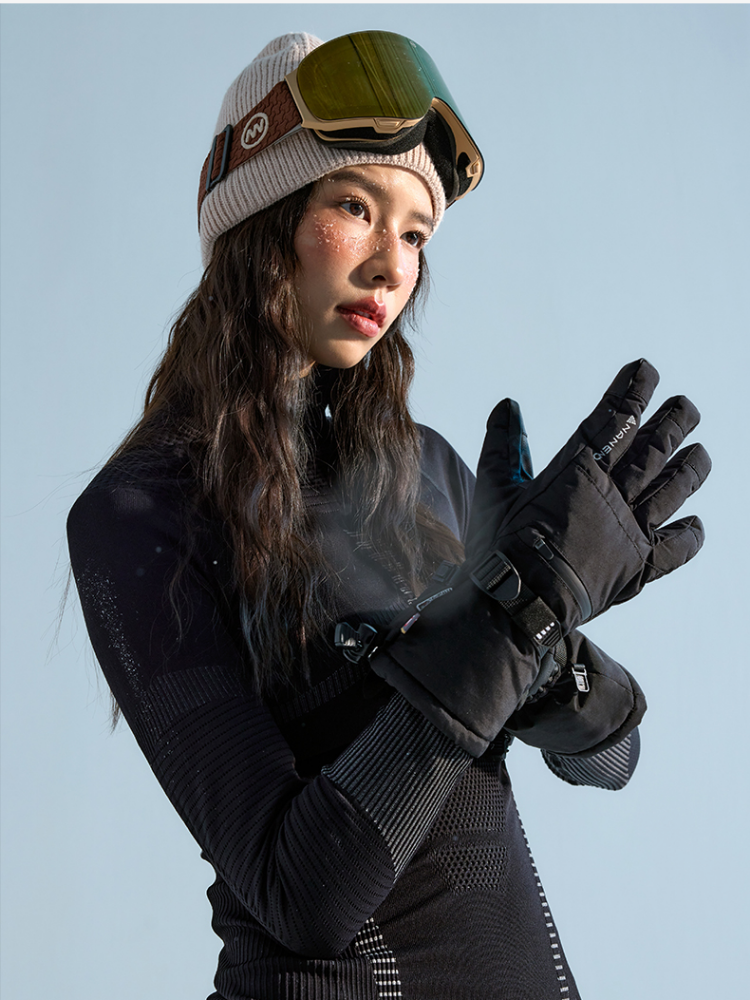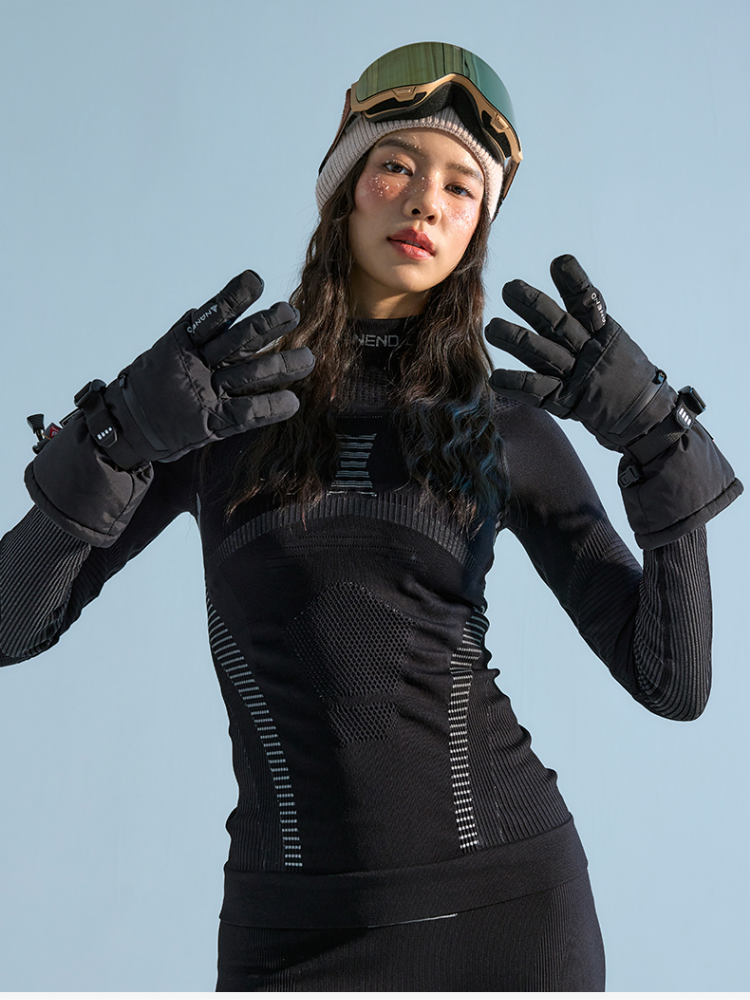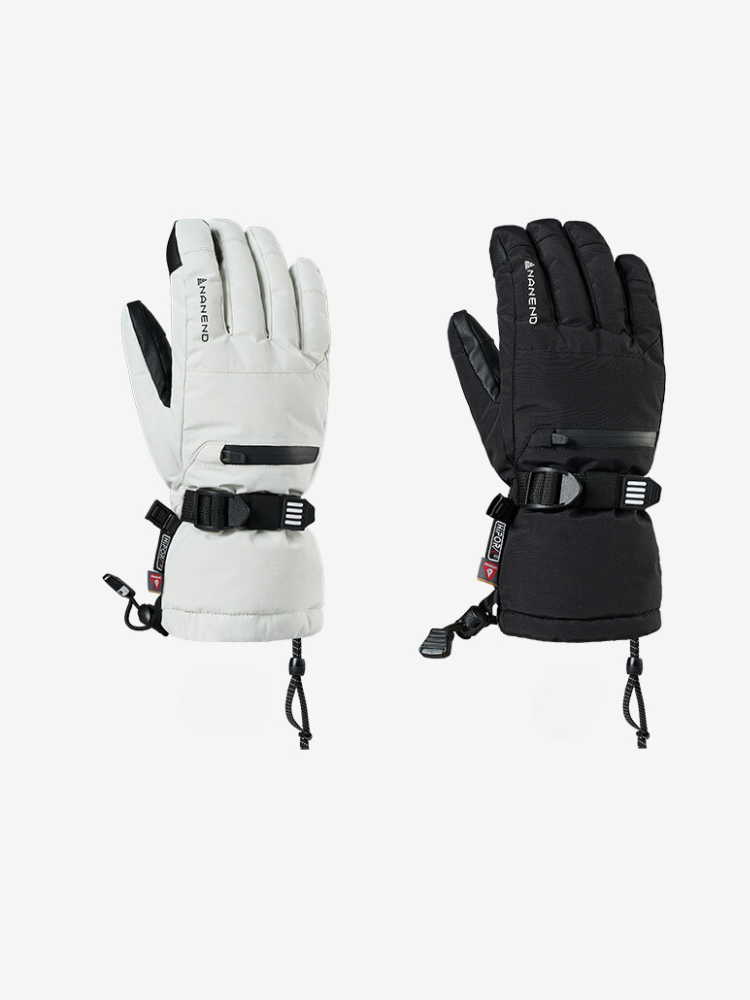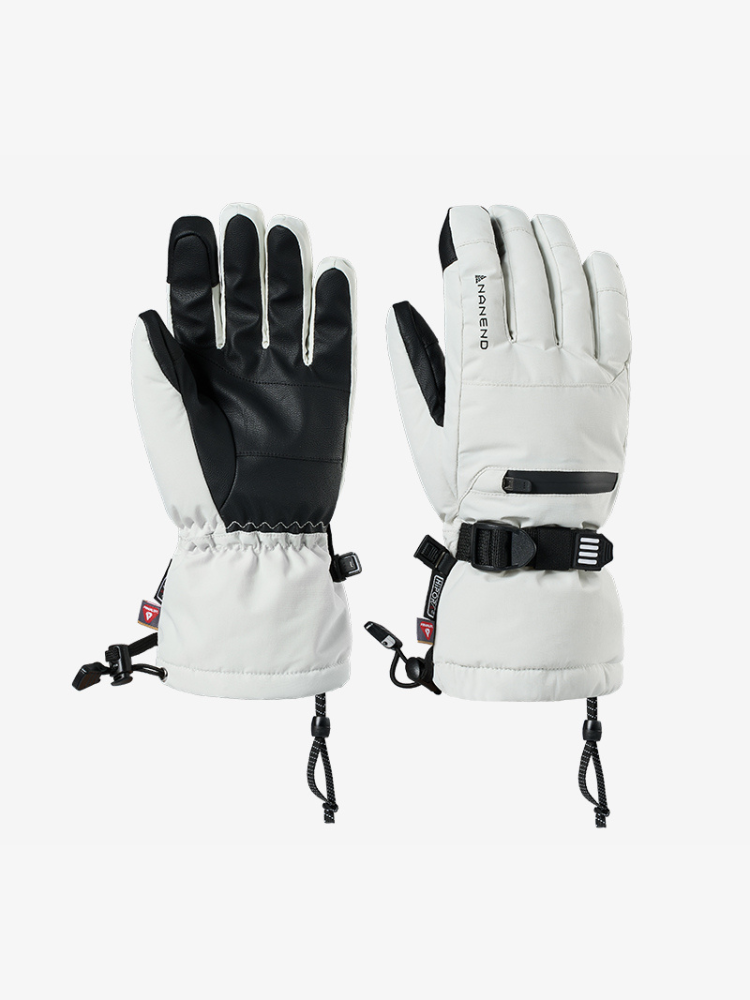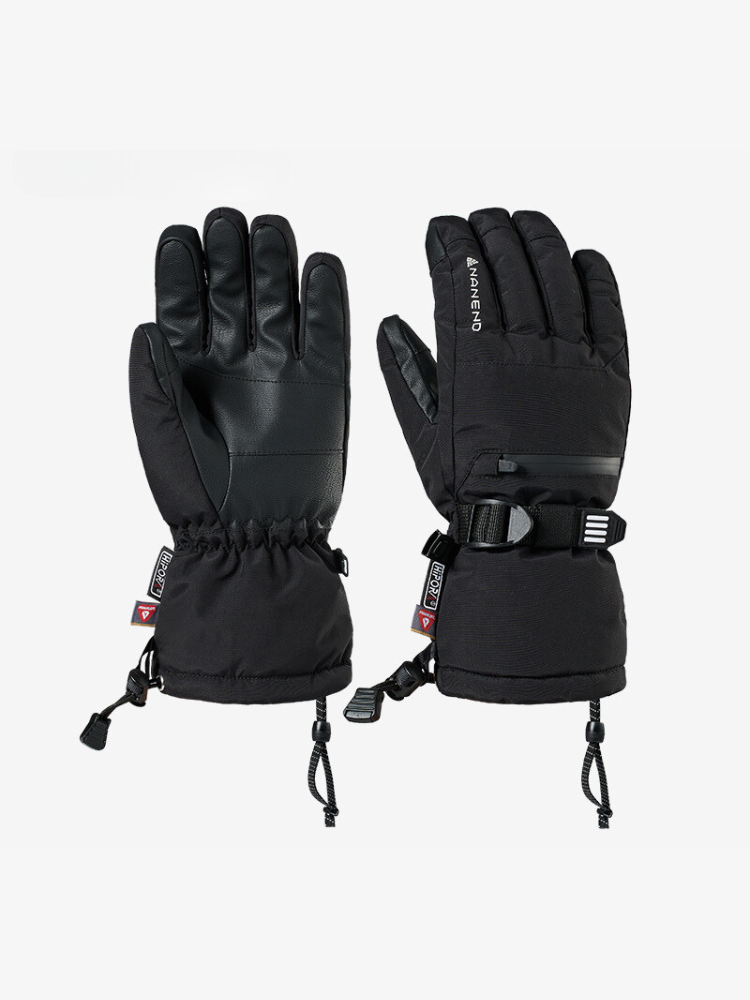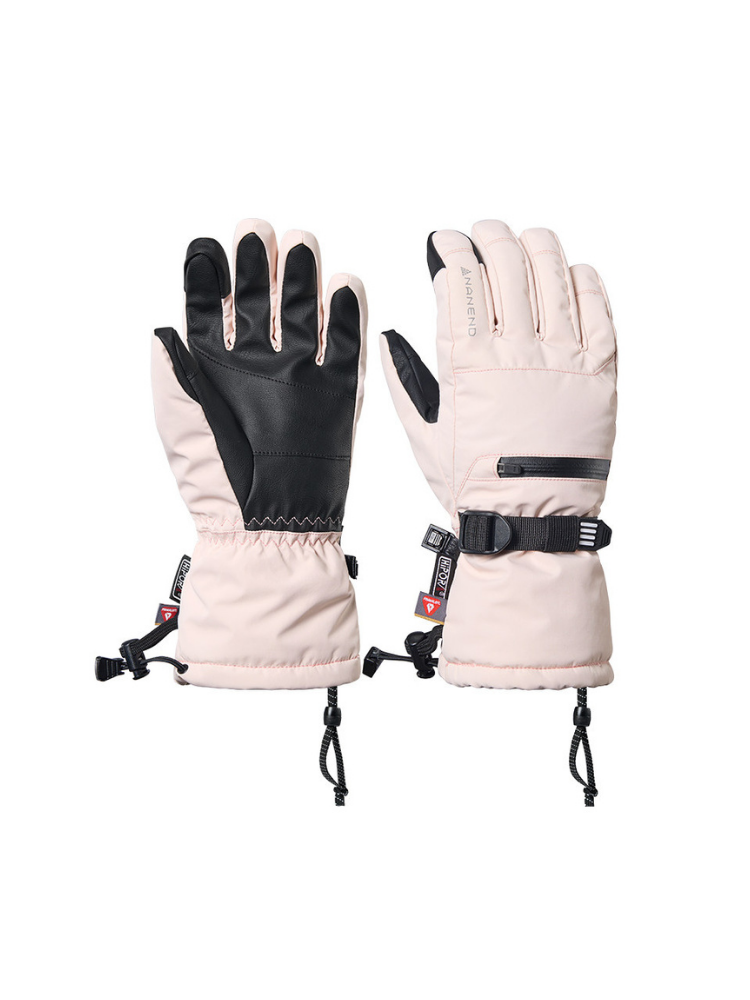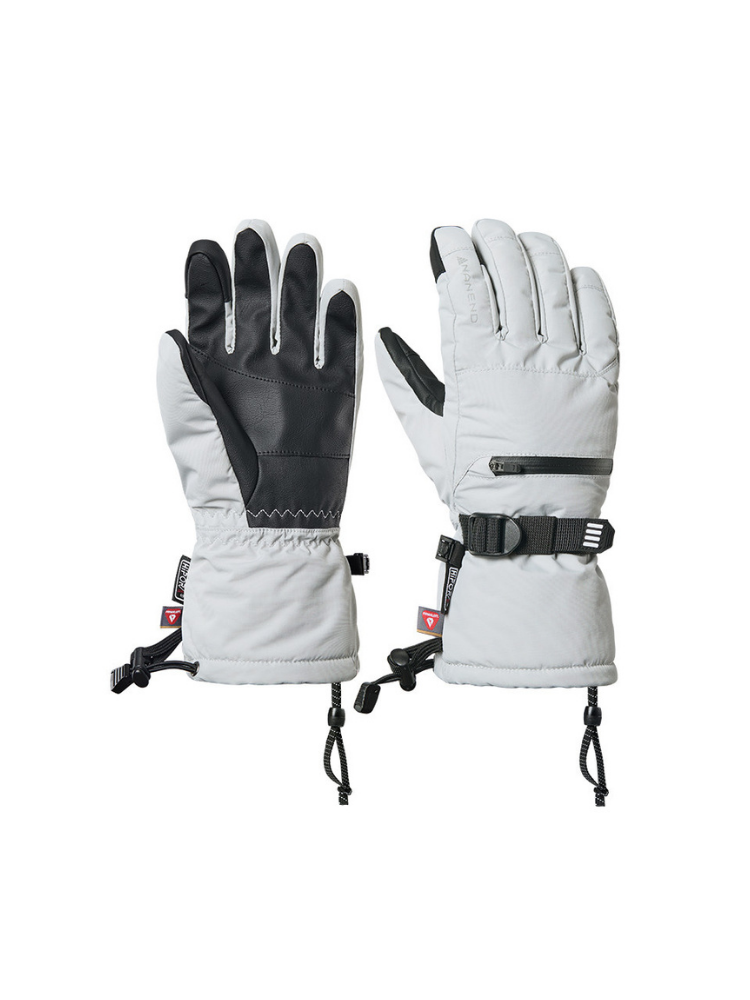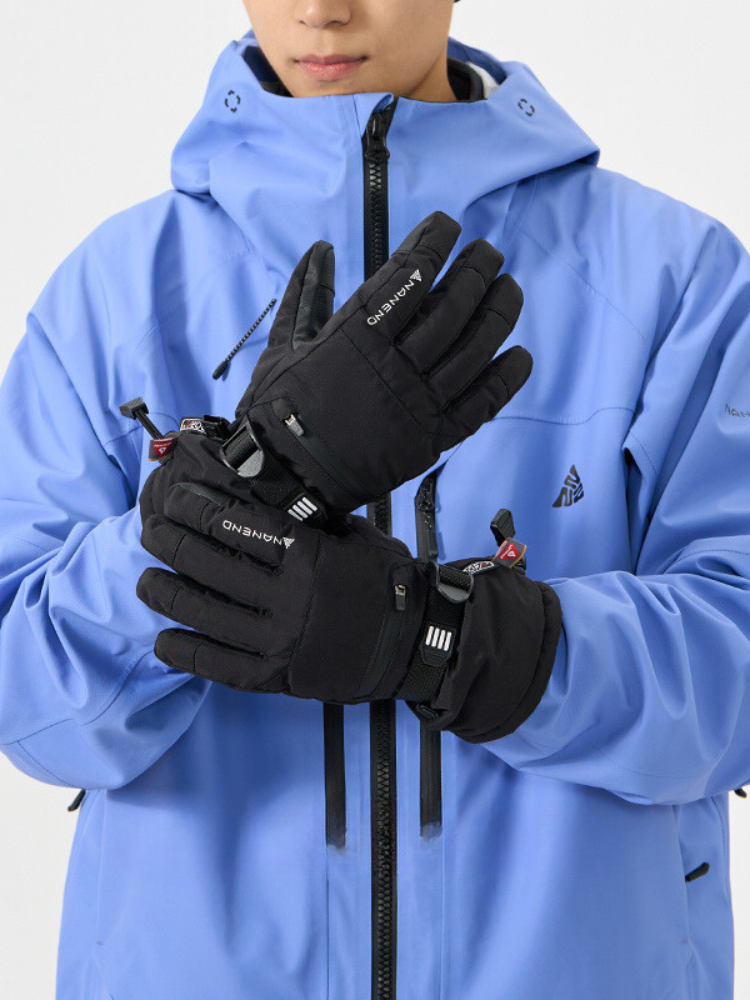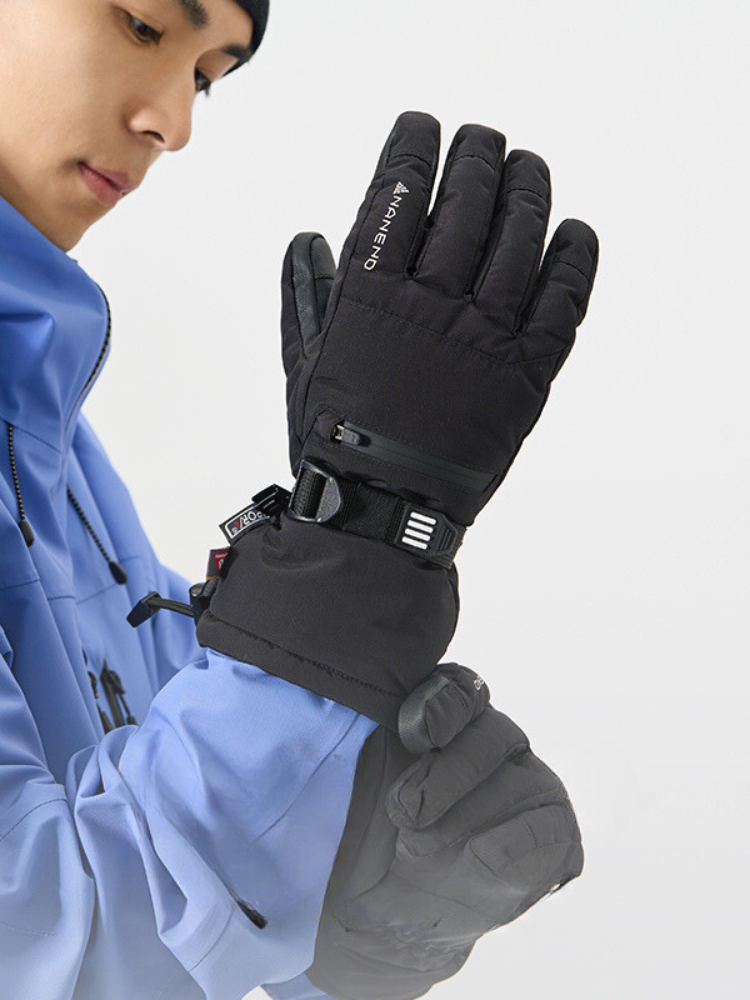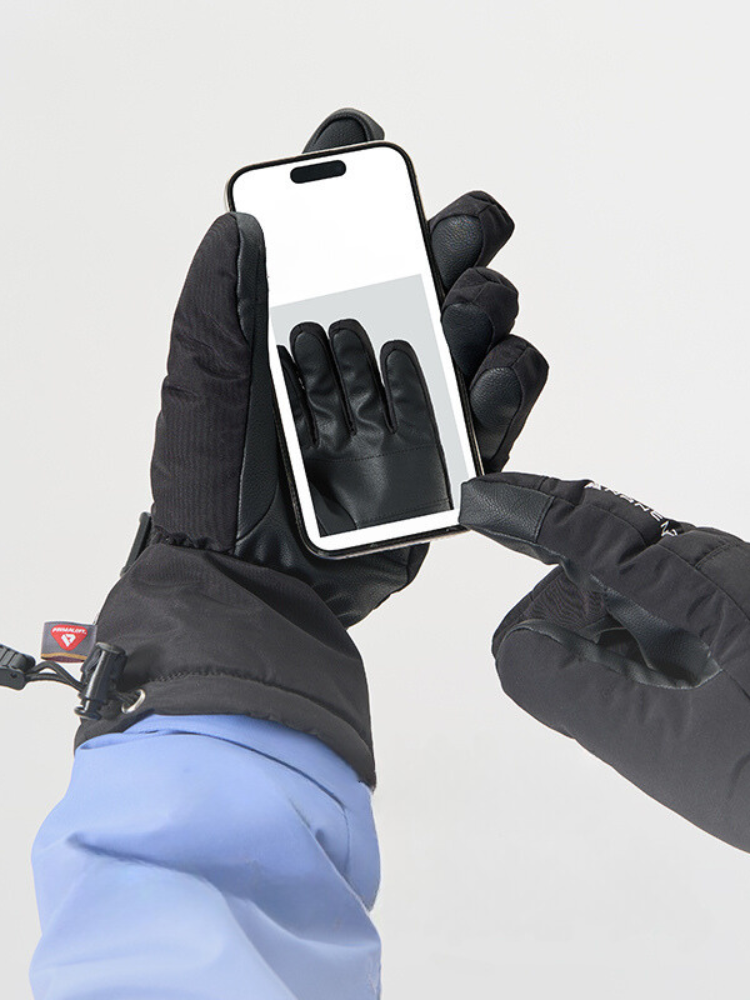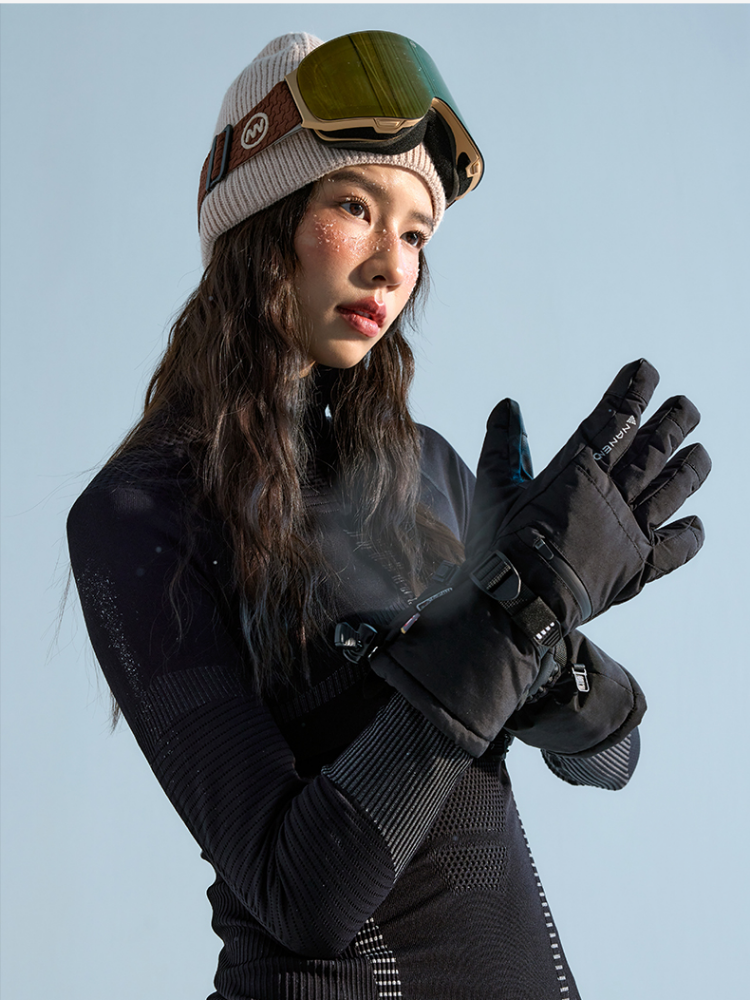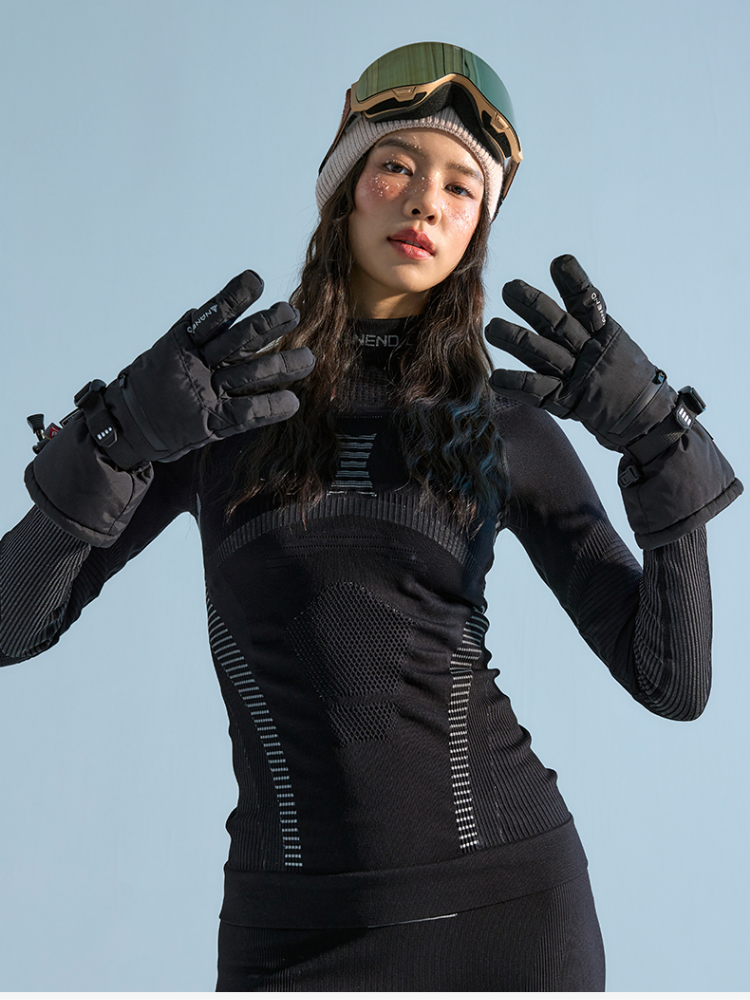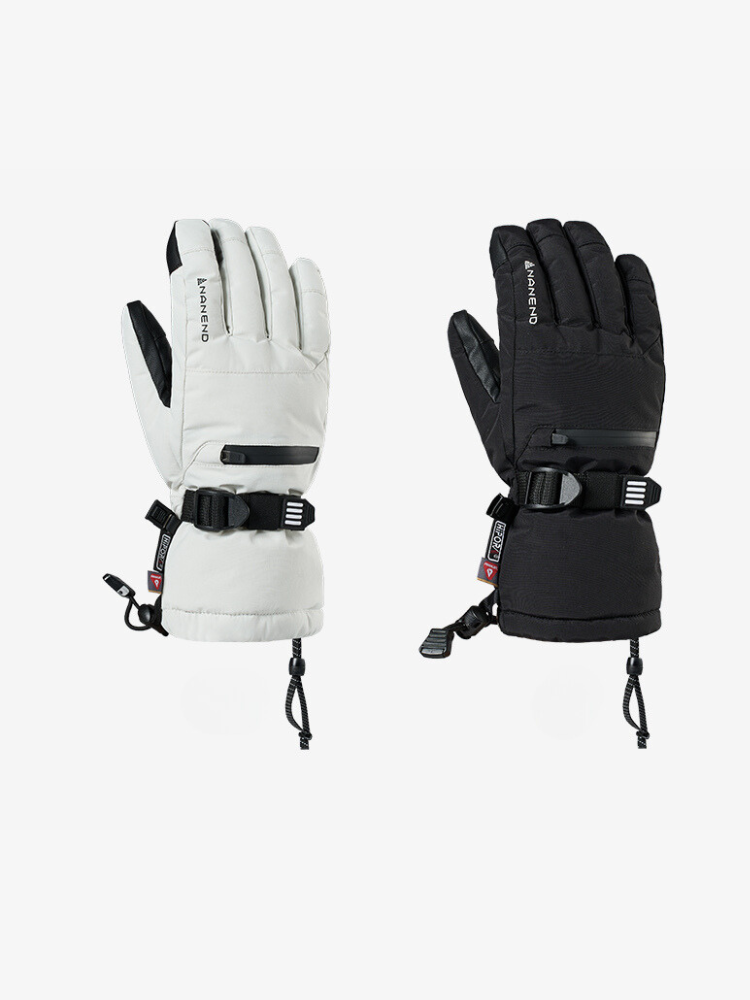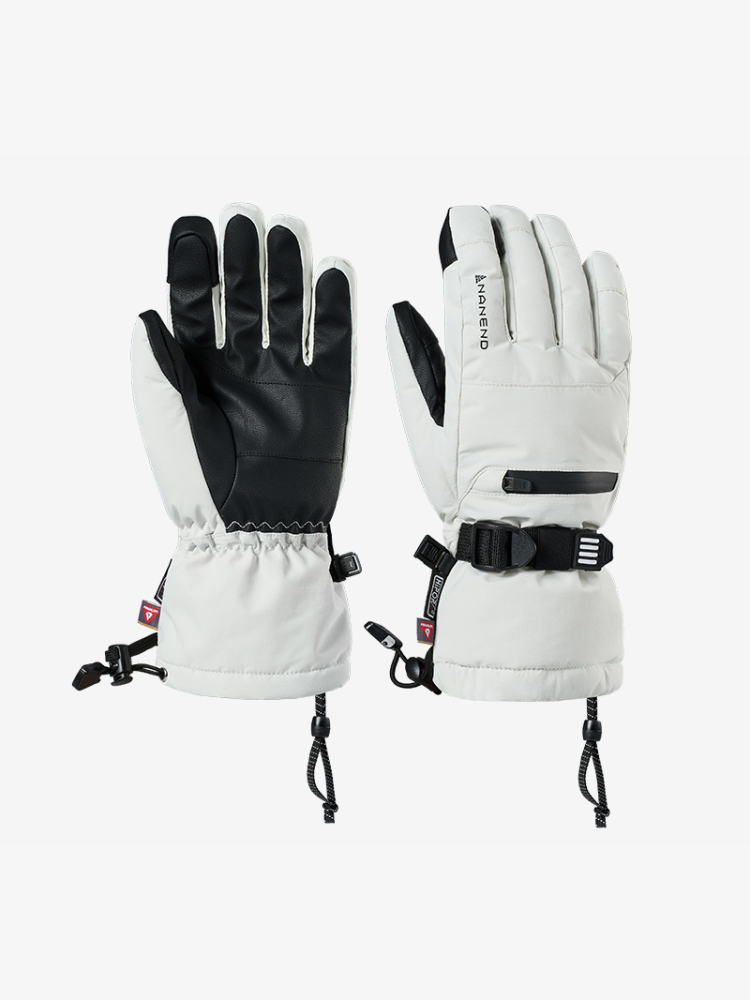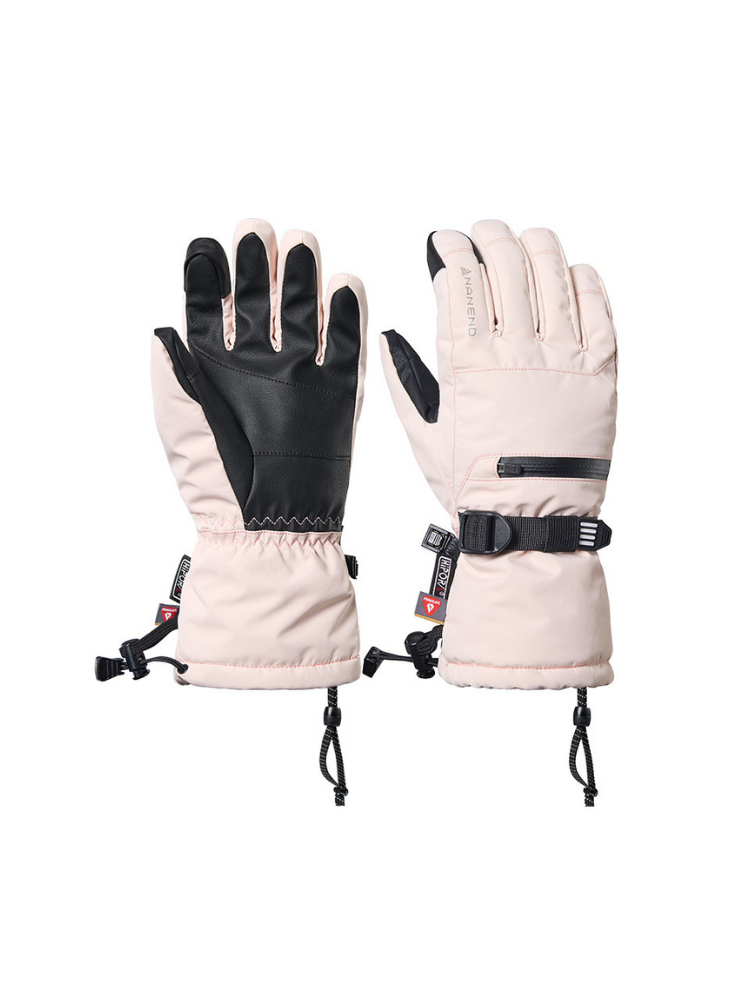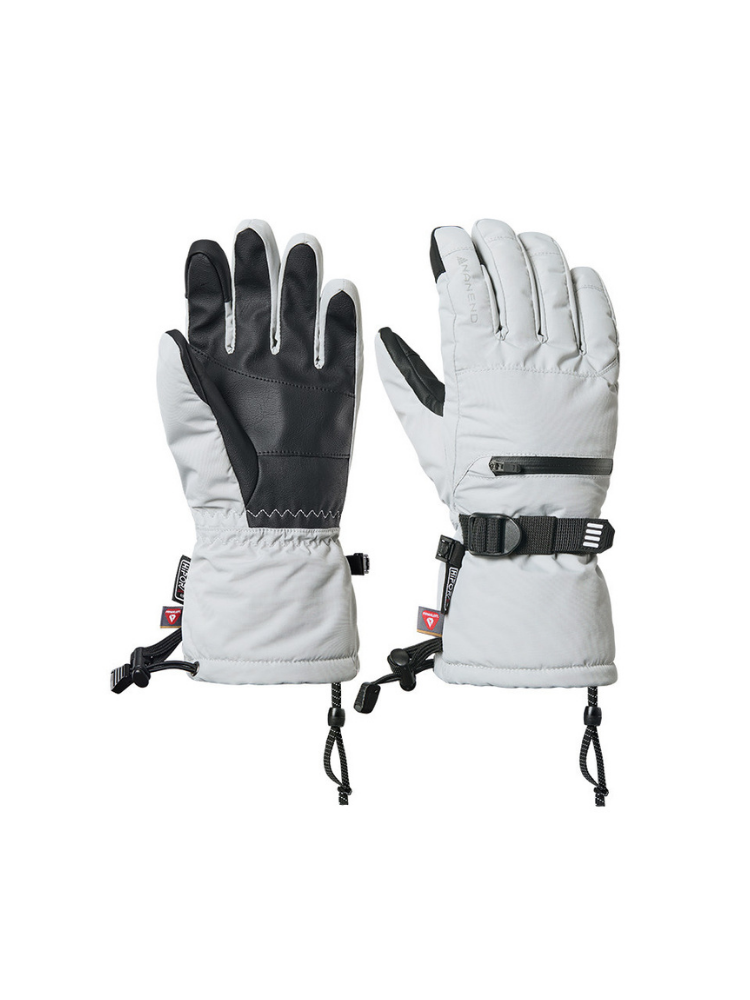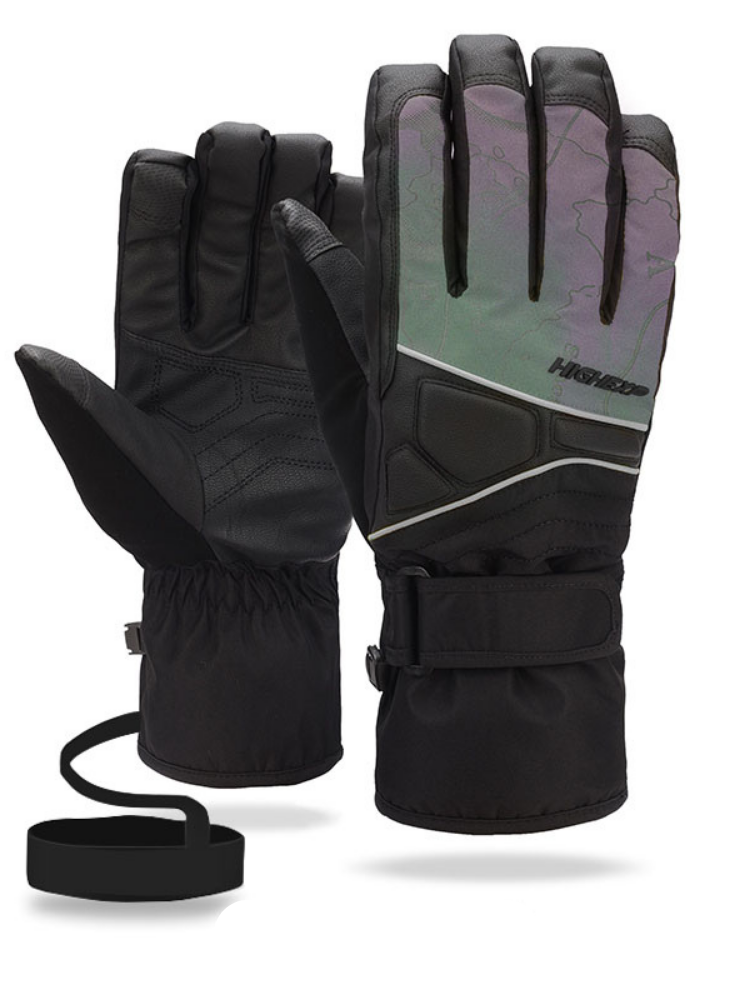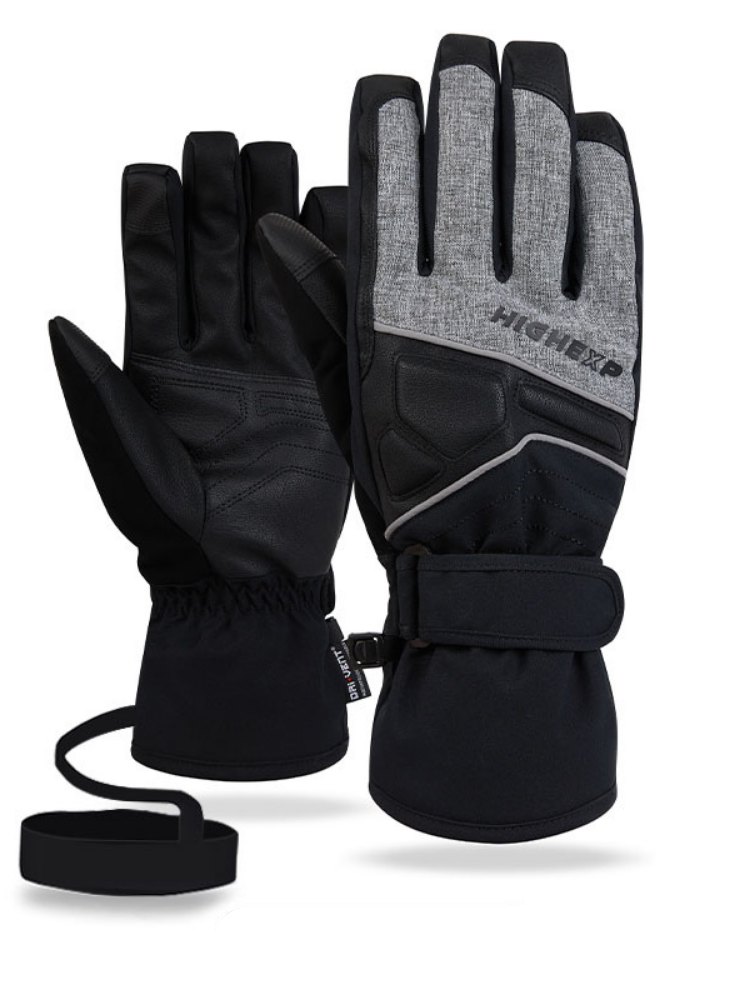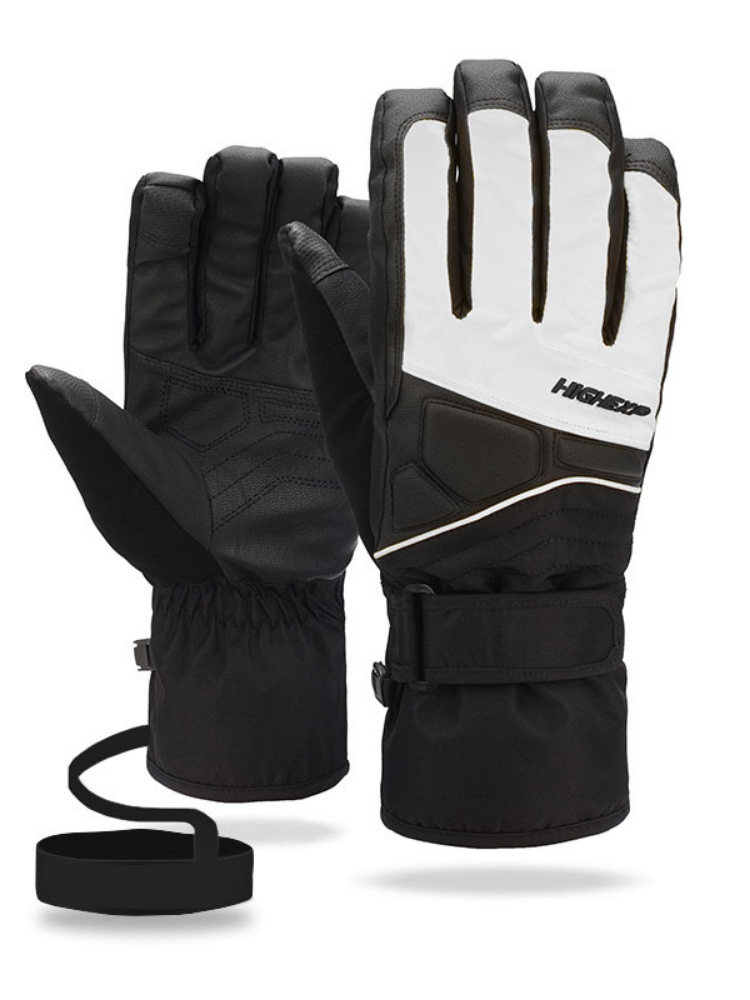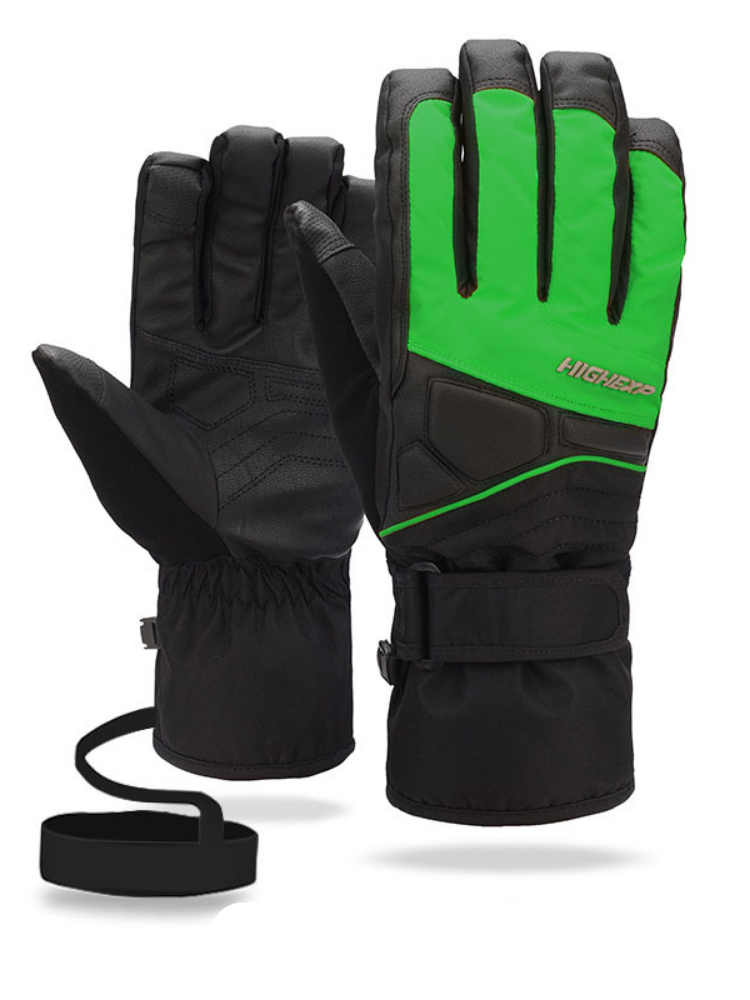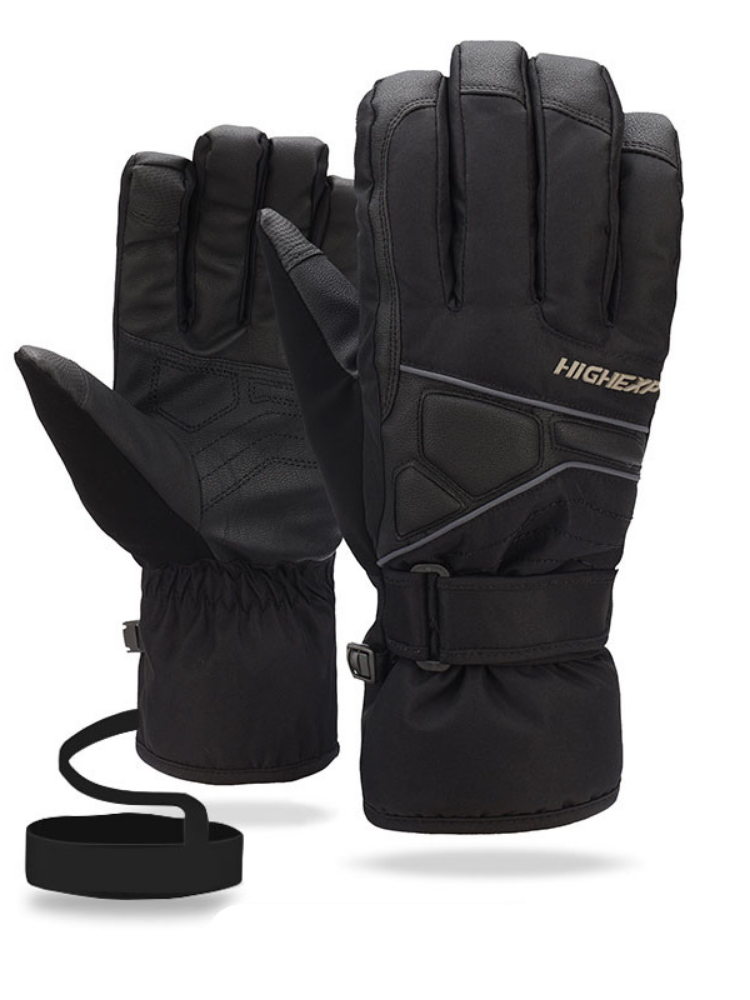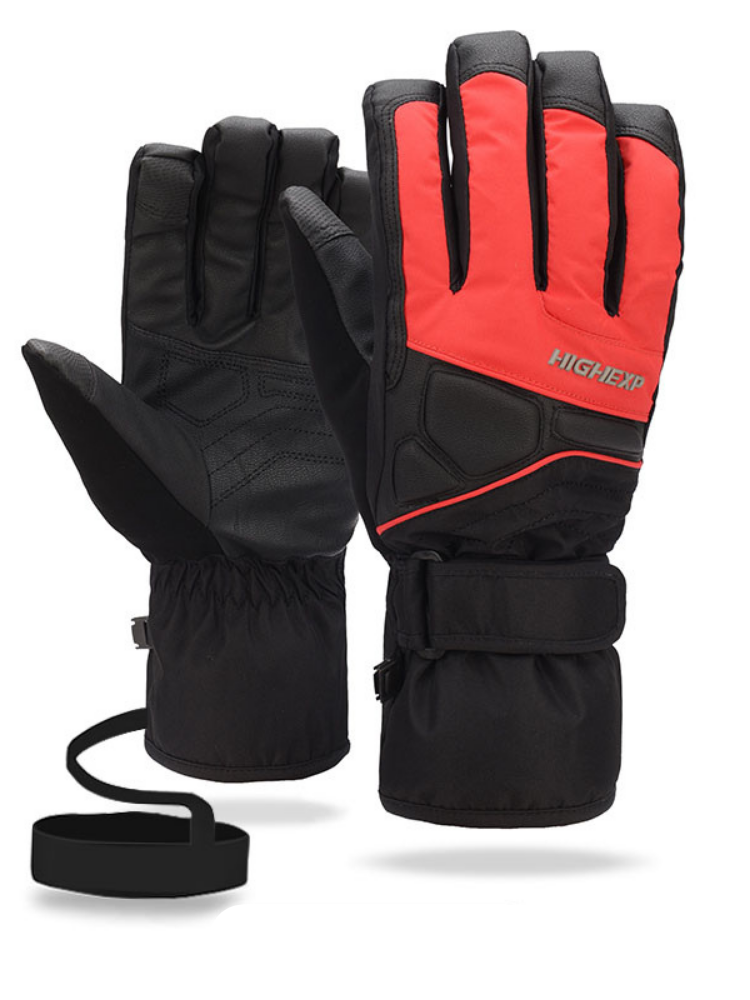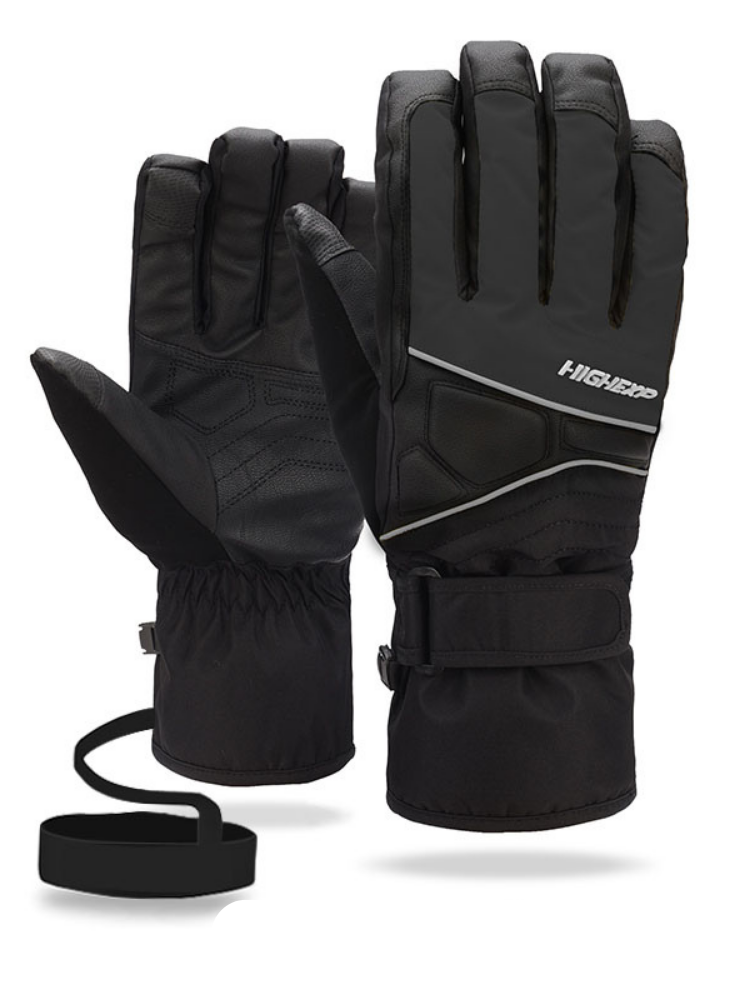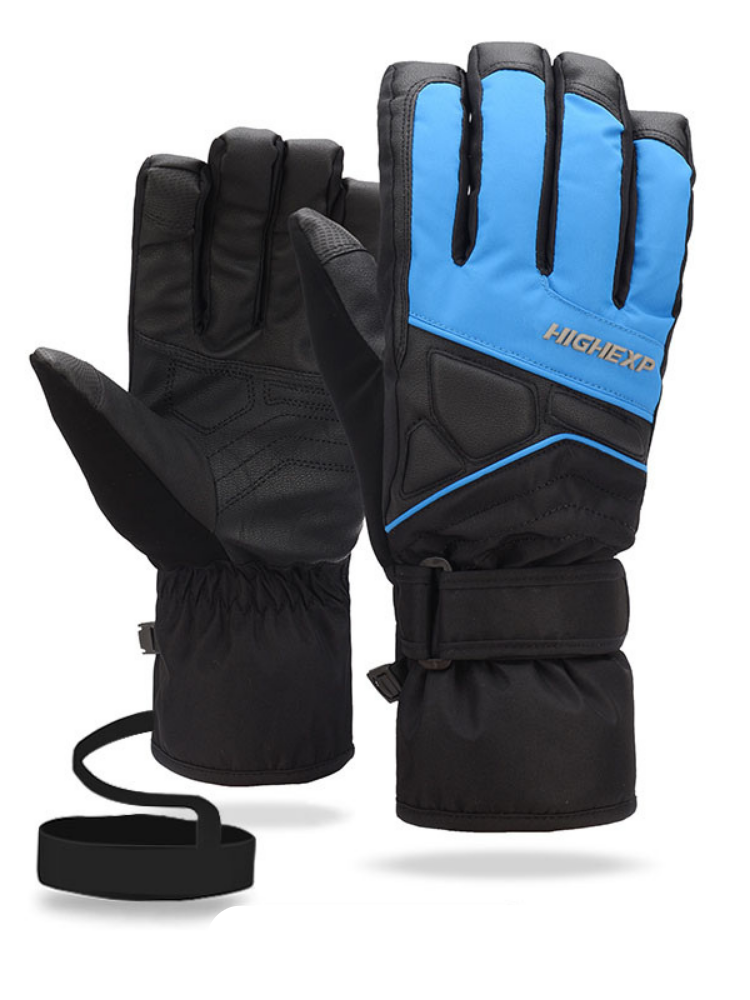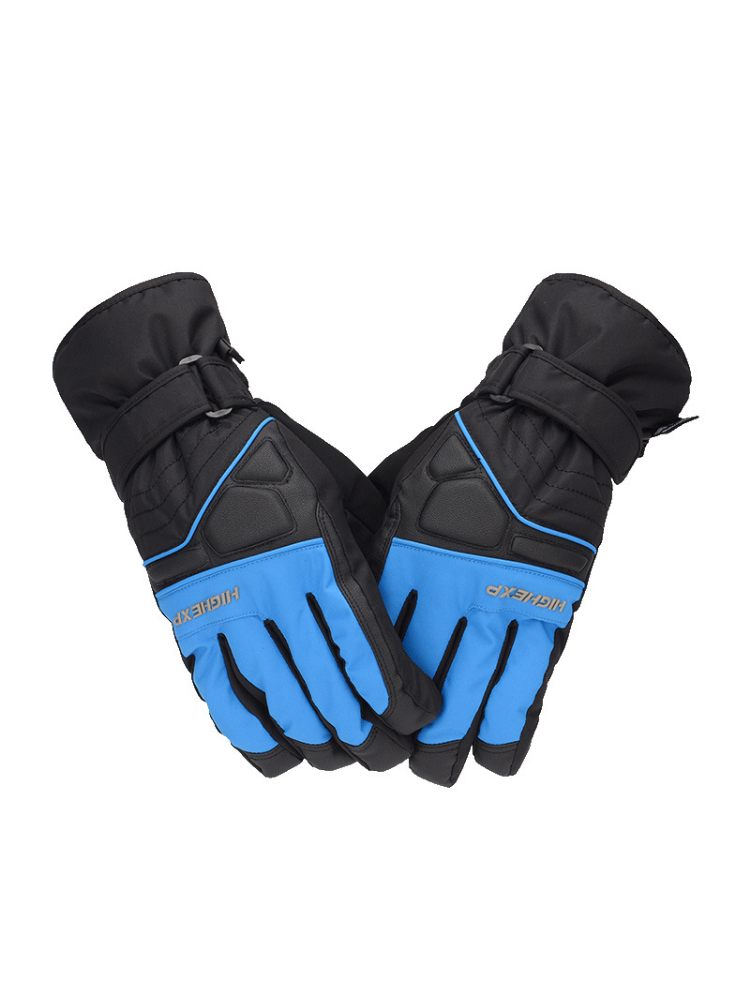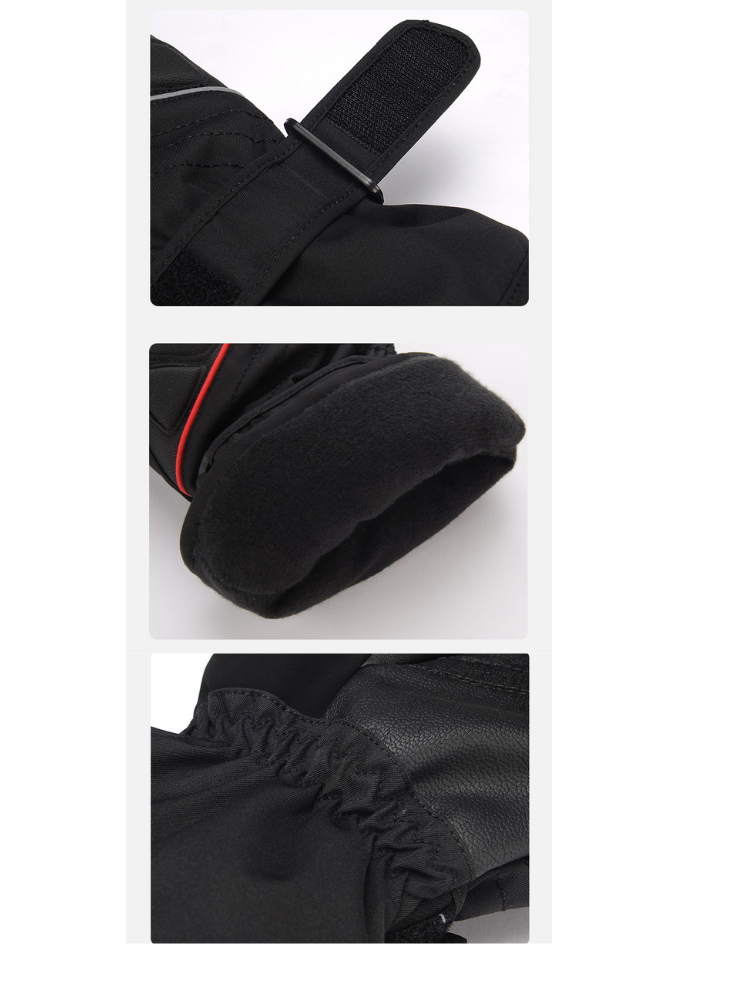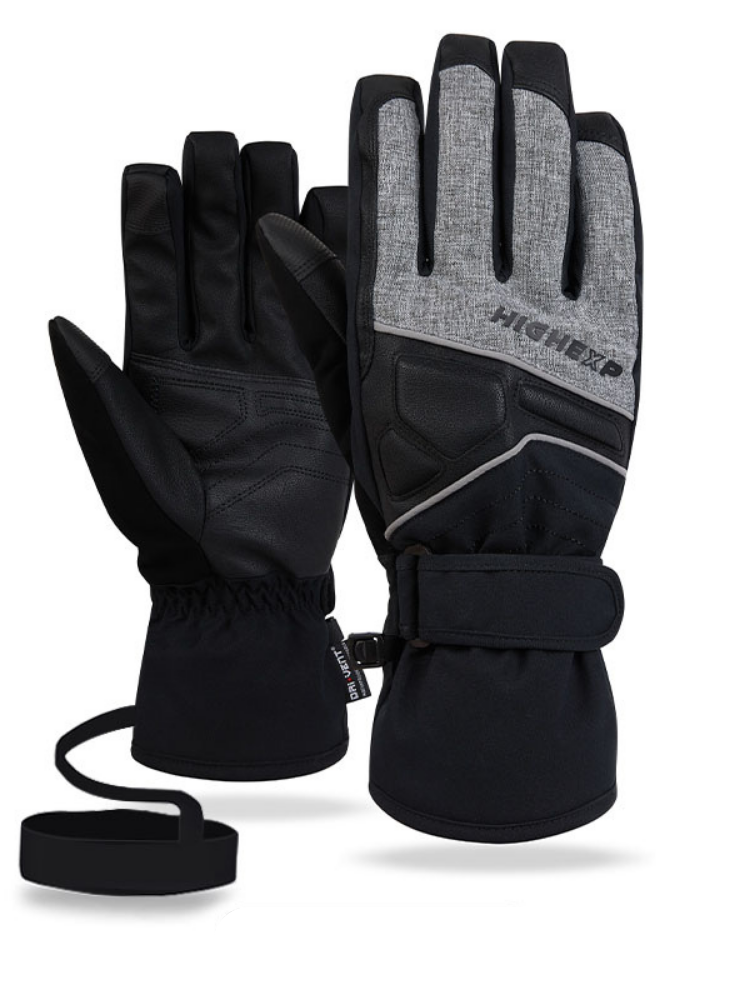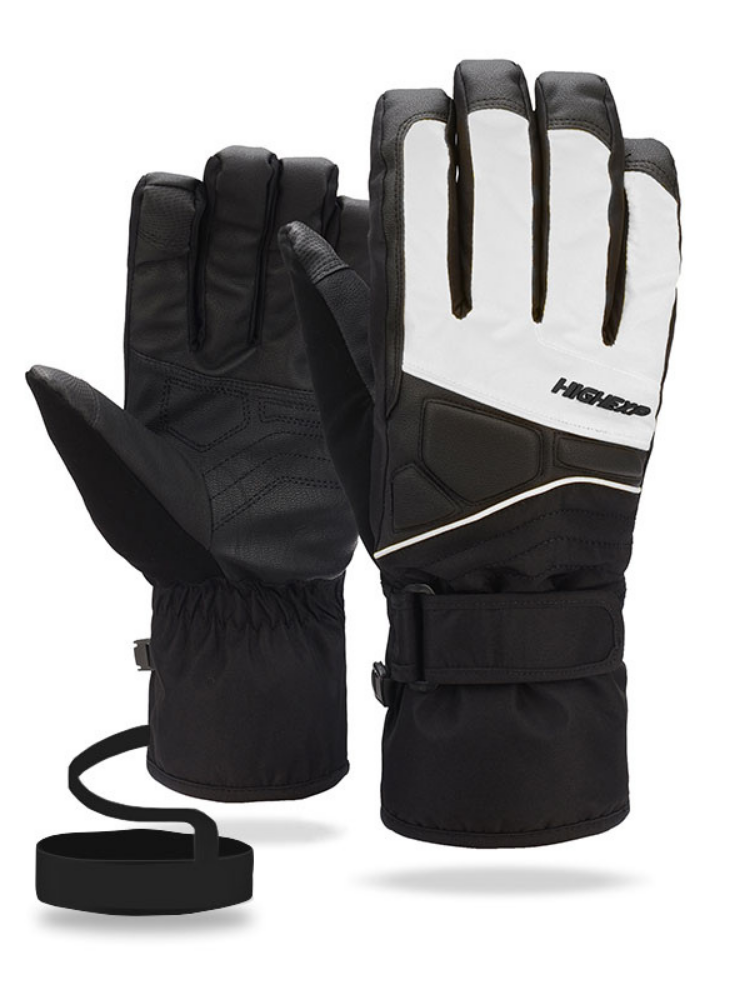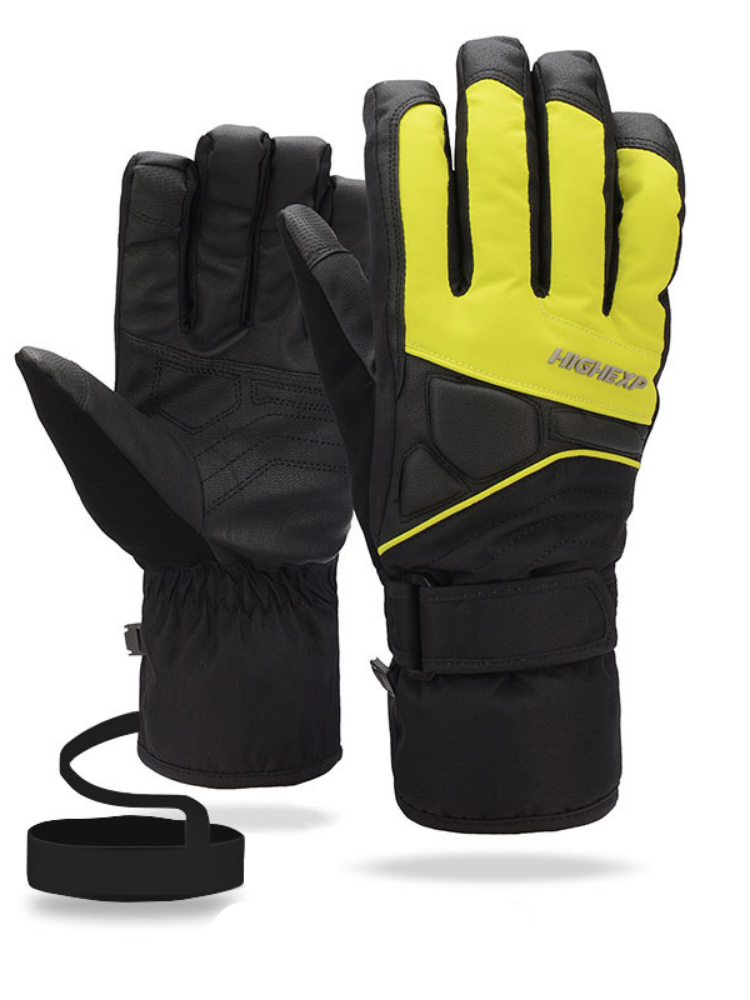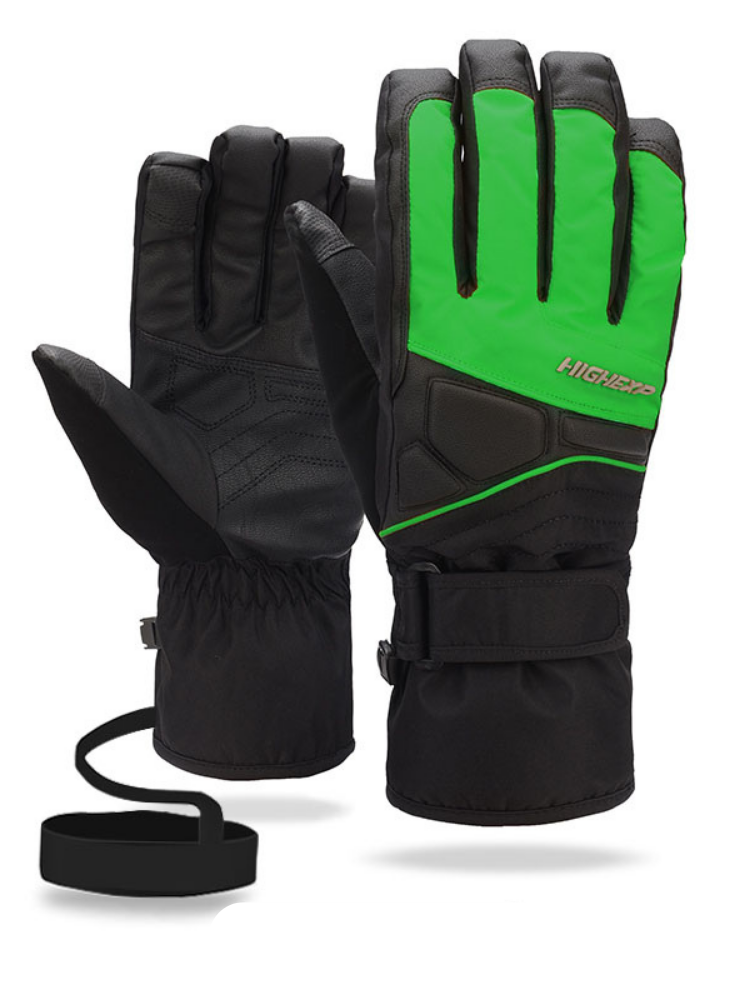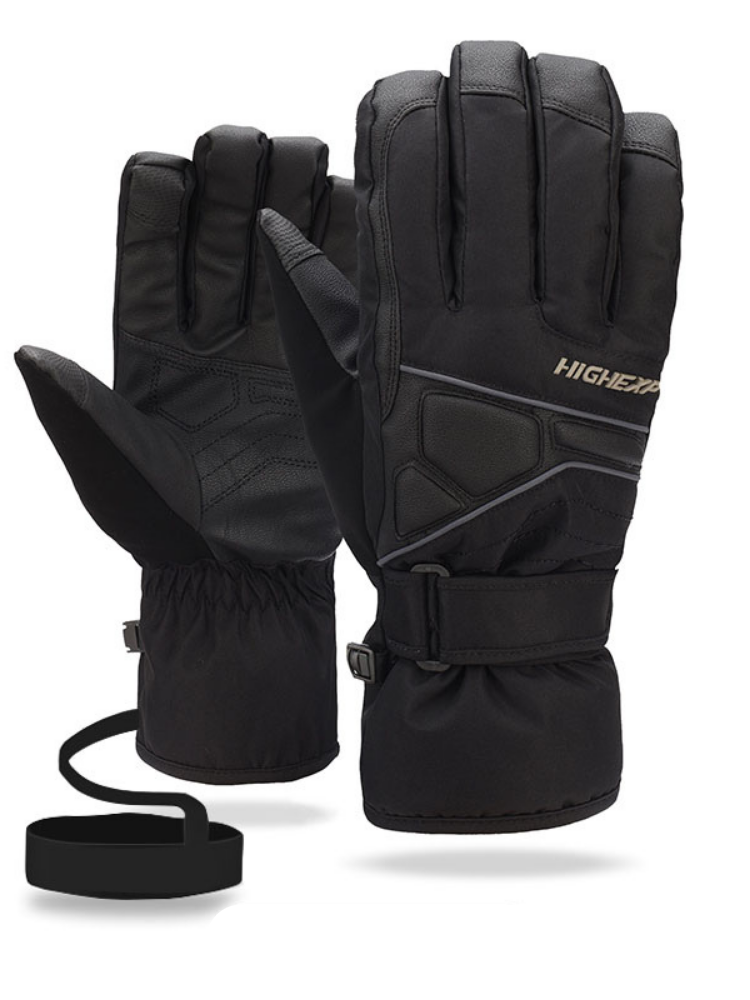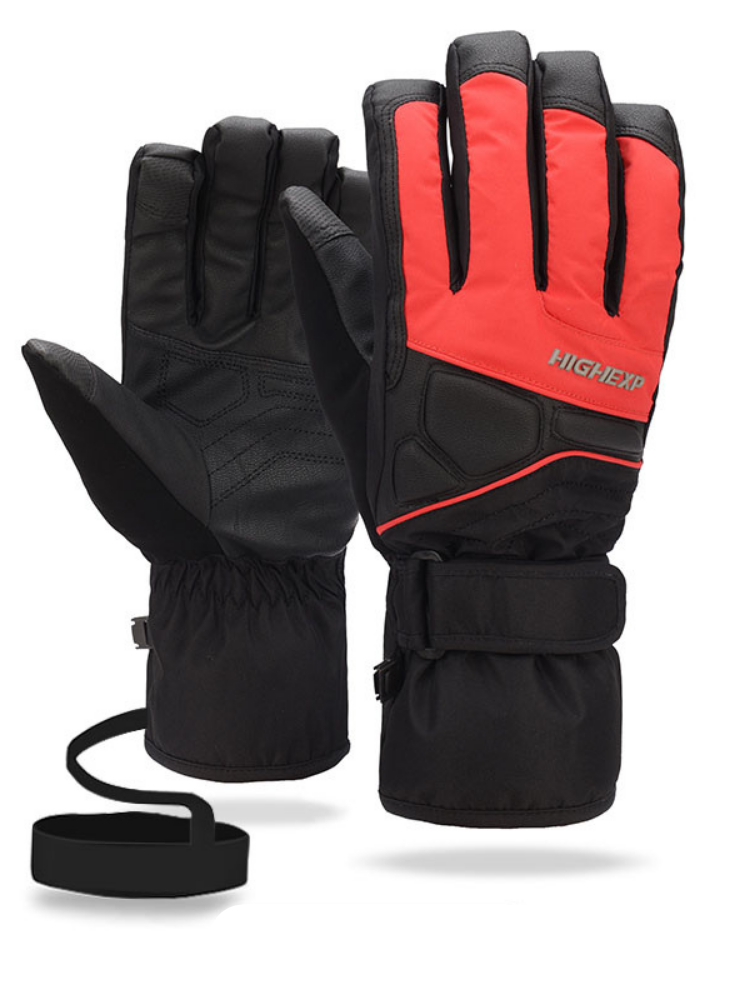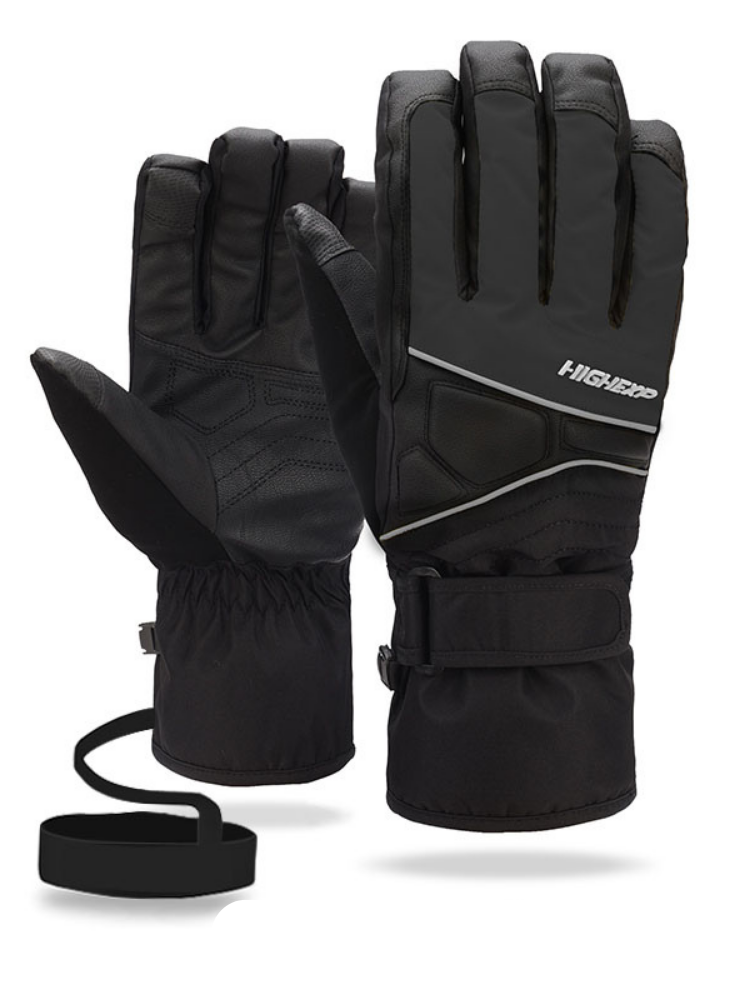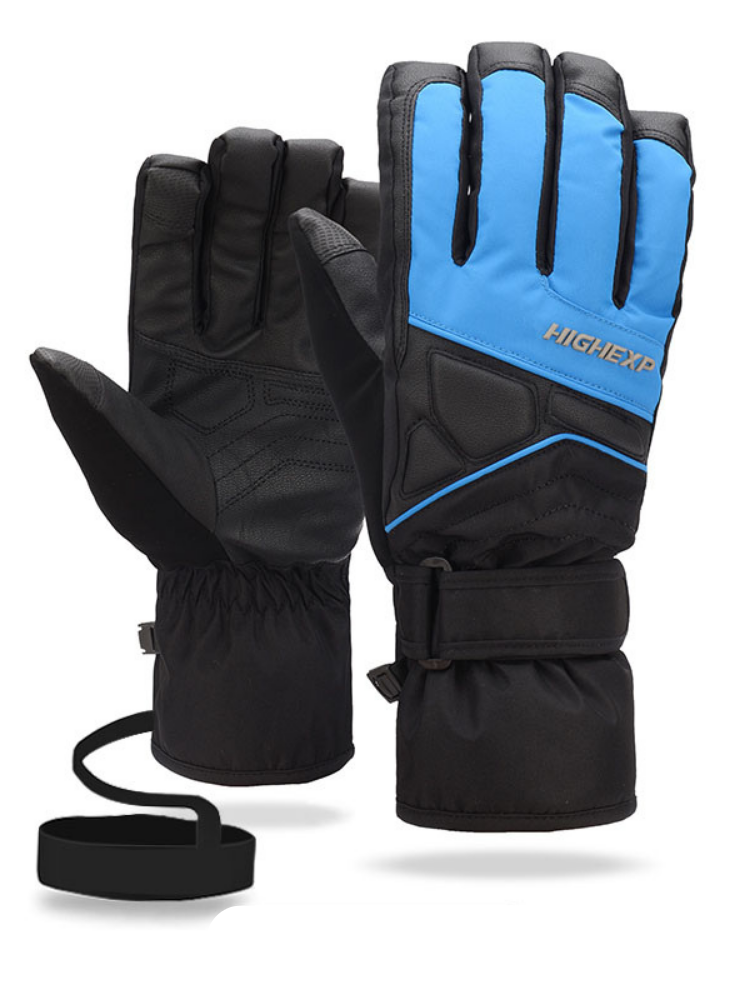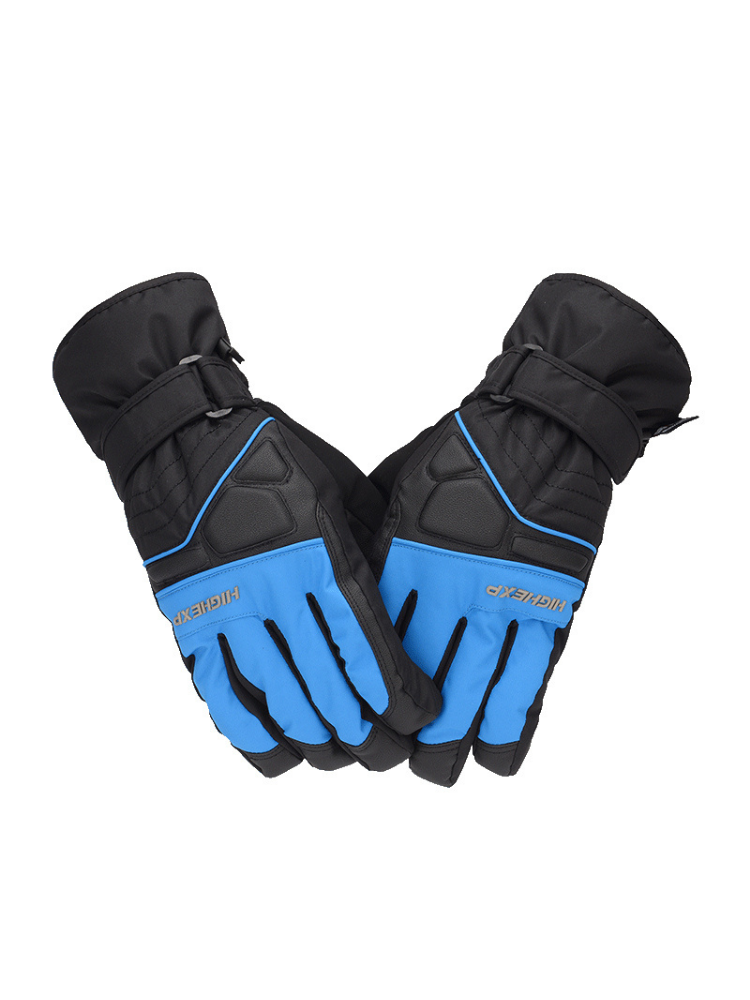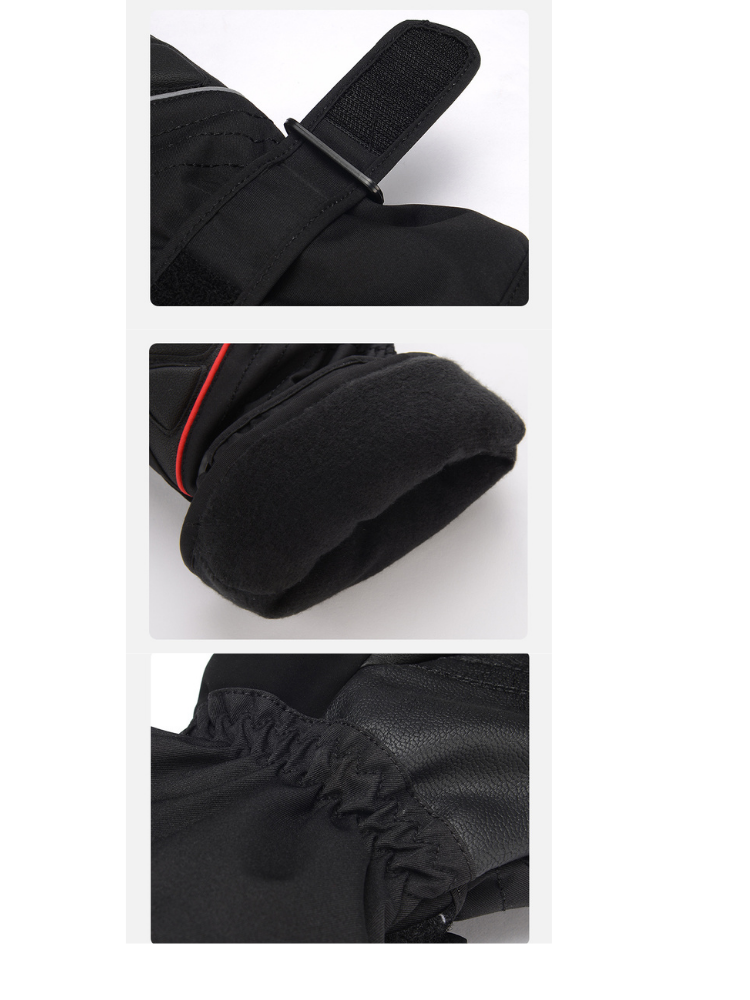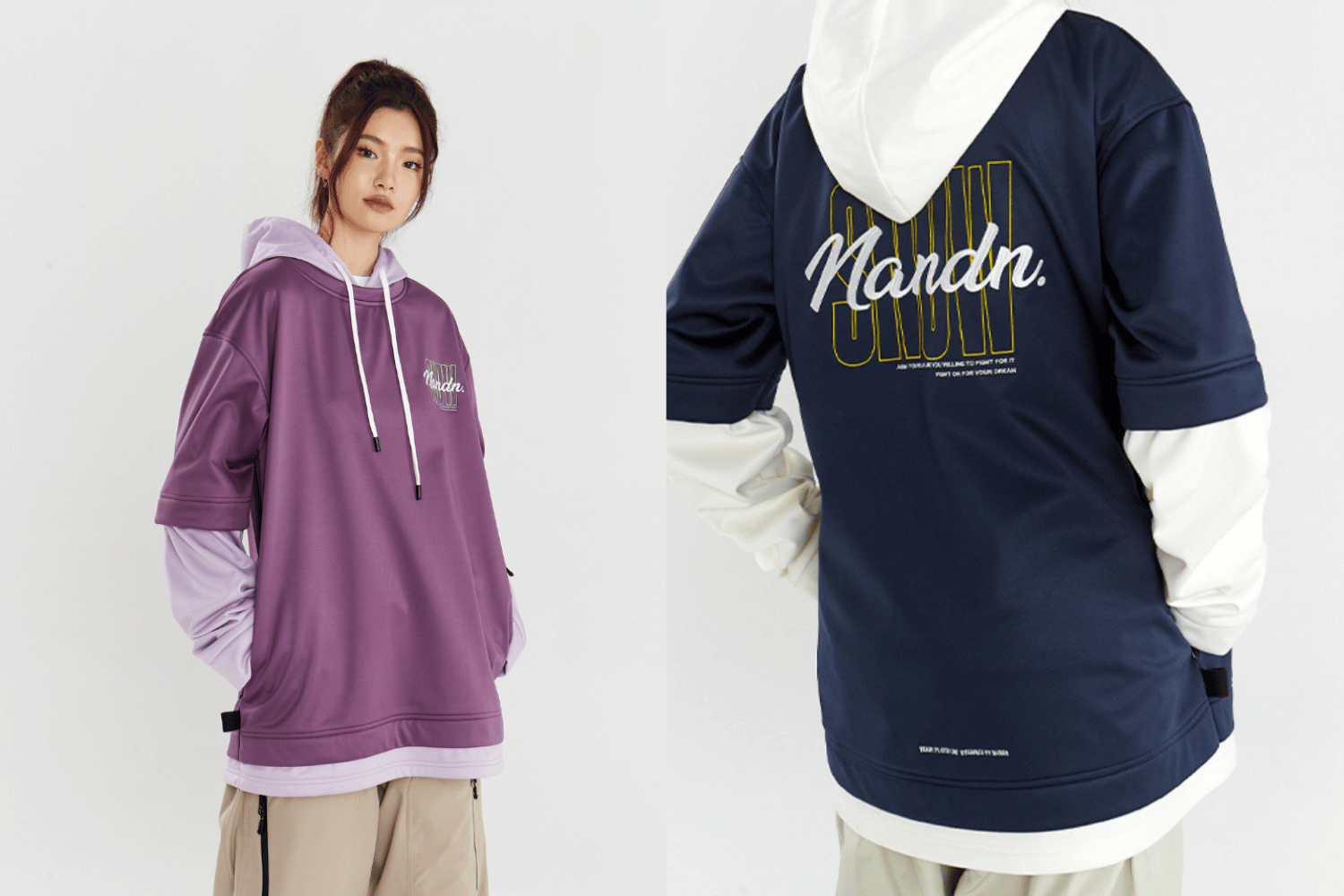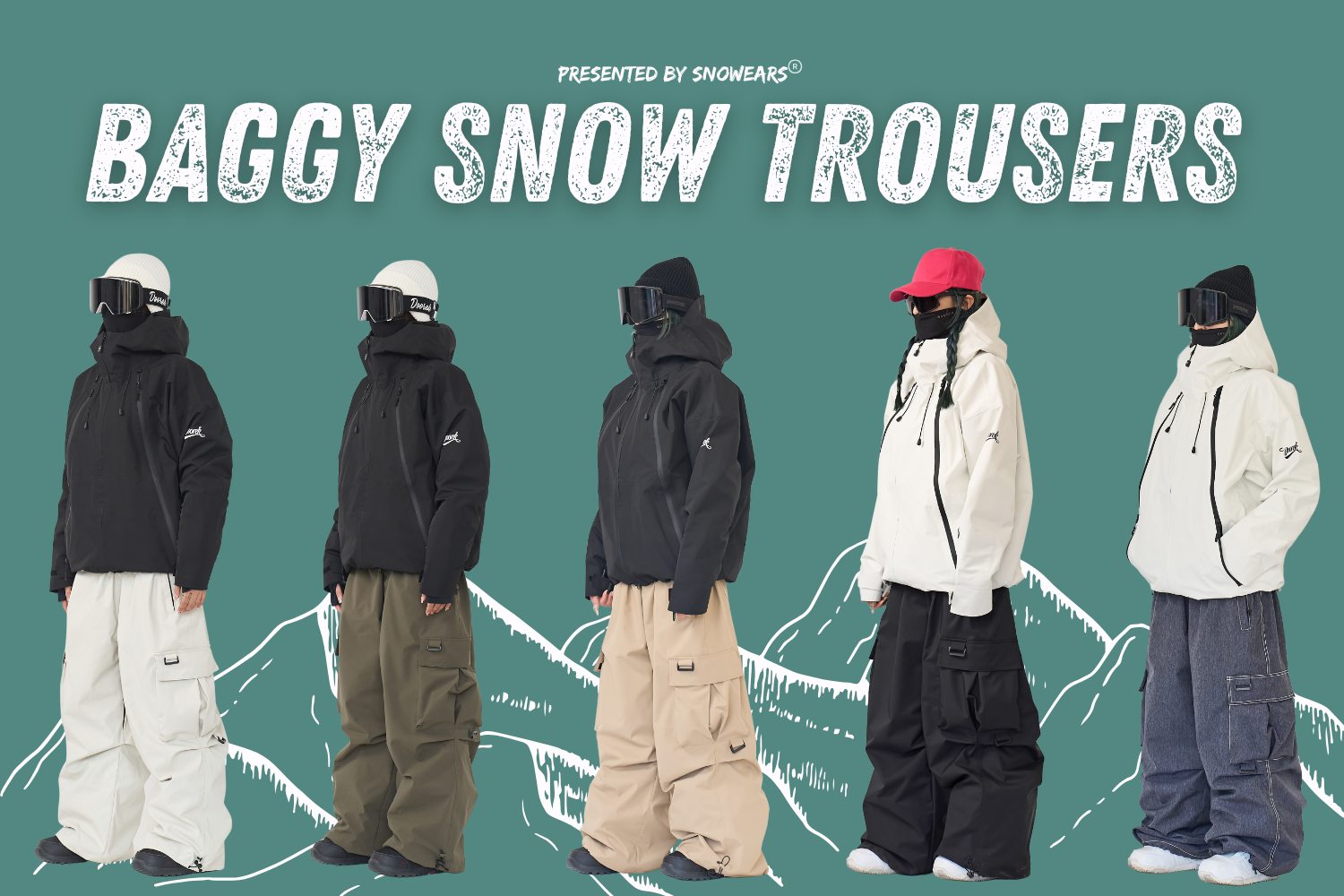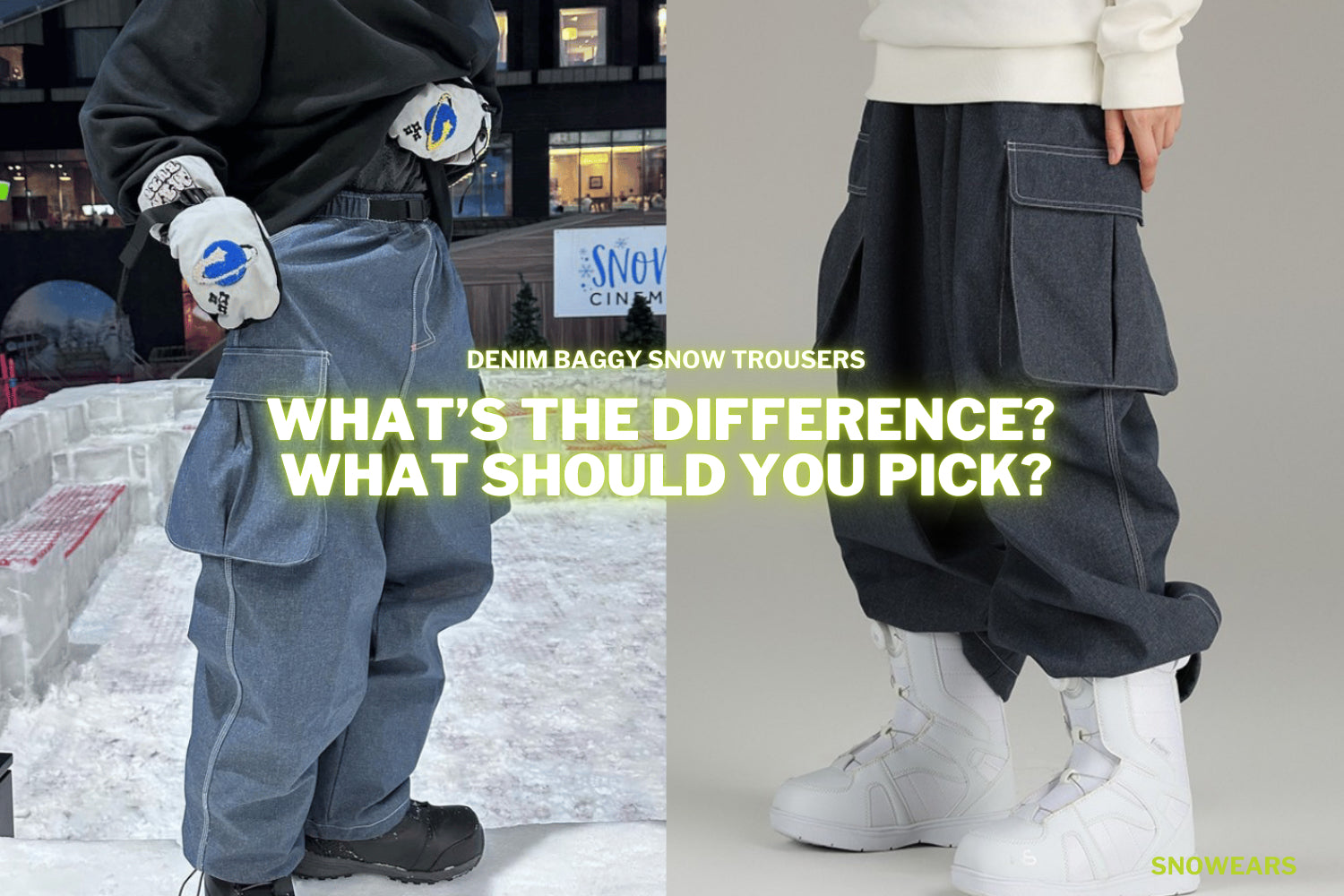Best Ski Gloves of 2025: Top Picks for Warmth, Fit & Storm-Day Durability | Snowears
Cecilia Wong
August 20, 2025
Best Ski Gloves of 2025 | Snowears
Pre-intro
I tested 9 products and found NANEND Classic Durable Snow Gloves to be the best overall ski gloves.
Intro
We’ve tested ski gloves in real snowstorms, not showroom floors. What cut? The ones we’d wear—again and again.
Our top pick? The NANEND Classic Durable Snow Gloves. These things are built like a tank but feel like a favorite hoodie. They’re warm without the bulk, tough without being stiff, and surprisingly breathable when you're hoofing it up a bootpack. After weeks of wear—from chairlifts to car scrapers—they showed zero signs of breakdown. No gimmicks, no drama. Just dependable performance at a fair price. That combo’s harder to find than you’d think.
Still, not every skier needs the same glove. Some riders brave deep powder in sub-zero temperatures. Others hit groomers on sunny afternoons. You might care more about wrist mobility than insulation, or prioritize touchscreen fingertips over leather palms. There’s no one-size-fits-all—just smart choices for specific needs.
That’s why we’ve rounded up the best gloves for different conditions, budgets, and riding styles. Because frozen fingers ruin fun fast, and the right pair can make all the difference.
Let’s find your perfect match. Keep reading.
- Introduction
- Best Overall Product
- Best Budget Product
- Most Sustainable
- Max Waterproofing
- Warmest
- Most Comfortable
- Best 3-Finger Ski Glove
- Best Price + Performance Ski Goggles
- What To Consider When Buying Ski Gloves
- How Should I Size My Ski Gloves?
- Conclusion
Table of Content
#1 - Best Overall Product
NANEND Classic Durable Snow Gloves
The Nanend Classic Durable Snow Gloves are the kind of gloves you buy once, then forget about—because they just work.
Every feature, from the heat-trapping Primaloft insulation to the bombproof HIPORA membrane, is optimized for cold-weather performance. These aren’t flimsy fashion pieces.
They're true winter tools—warm, dry, rugged, and breathable enough to ride hard from first chair to final lap. Whether you're battling blizzards or just hate cold fingers, this is the pair you'll keep reaching for.
Pros
- Primaloft insulation delivers legit warmth without bulk
- HIPORA waterproof membrane keeps hands dry all day
- Durable shell resists abrasion, impacts, and edge cuts
- Naturally odor-resistant lining stays fresh longer
- Fits like a glove should—secure, flexible, and fuss-free
Cons
- A bit overbuilt for uphill touring or mild spring days
- No touchscreen compatibility (but hey, that’s what chairlifts are for)
Detailed review
When you ride in sub-zero temps, tree-packed terrain, or full-on storm cycles, no room for gear flakes. The Nanend Classic Durable Snow Gloves are built for the rider who stays out when everyone else heads in. They're loaded with Primaloft® insulation for real warmth (not just marketing fluff) and backed by a HIPORA® waterproof membrane that handles wet chairlifts and deep snow without breaking a sweat.
What sets them apart, though, is the balance: rugged on the outside, cozy on the inside. You get all-day comfort without sacrificing grip or control. The outer shell shrugs off sharp gear and crusty snow, while the lining resists odor and stays breathable, even on those “hike to hit it” kind of days.
Seriously warm. Surprisingly tough. Built for riders who treat winter like a full-time sport, not a weekend hobby.
Score: 4.7/5
Sure, they’re not ultralight touring gloves. And no, you can’t text in them. But if you’re looking for one glove to trust all season, whether you're carving corduroy, dropping cliffs, or shoveling out your car after a dump, this is it.
Final word? These gloves punch above their price, perform like premium gear, and look good doing it. You’ll wear them until they wear out… which might take a while.
#2 - Best Budget Product
High Experience New Gloves
The High Experience New Gloves punch well above their weight in the budget glove category.
They combine smart design with solid weather protection, delivering warmth and dryness that most recreational riders will appreciate. These gloves handle everything from groomers to lift lines without fuss, and their flexible fit makes them a joy to wear all day.
If you want dependable gloves that don’t break the bank, these are an easy pick.
Pros
- Waterproof shell keeps snow and moisture out, even on sloppy days
- Comfortable, flexible fit that grips poles like a champ
- Durable enough to survive regular resort abuse
- Great value for riders balancing performance and budget
Cons
- Insulation won’t cut it for sub-zero, wet backcountry days
- No touchscreen fingertips or wrist leash—small trade-offs at this price
Detailed review
If you’re after solid, no-nonsense gloves that won’t drain your wallet, the High Experience New Gloves deliver exactly that. Their waterproof shell handles sloppy snow and wet chairlifts like a champ, keeping your hands dry during long resort days. The fit strikes a great balance between snug and flexible, allowing you to grip poles and adjust gear with ease.
What stands out here is how well these gloves withstand regular use. The materials feel tough for the price point, shrugging off typical wear and tear on lift lines and groomers. While they aren’t made for extreme cold or backcountry epic days, they shine for anyone cruising the resort with style and practicality in mind.
Surprisingly tough and weather-ready for its price, perfect for resort riders who want reliable gloves without splurging. Not ideal for extreme cold or backcountry push.
Score: 4.6/5
Sure, they skip a few premium bells and whistles—no touchscreen tips or wrist leash—but honestly, that’s a fair trade for their price and performance. If you want reliable, comfortable, and weather-ready gloves without the premium price tag, these are an easy recommendation.
Put simply, the High Experience New Gloves are proof that solid performance doesn’t have to come with a premium price.
#3 - Most Sustainable
Gsou Snow Camouflage Strip Gloves
The Gsou Snow Camouflage Strip Gloves are pure winter armor. Loaded with thick insulation and a waterproof, windproof shell, these gloves don’t just fight the cold—they crush it.
They’re the go-to choice for anyone who spends serious time in freezing temps and wants their hands dry, warm, and protected no matter what.
While their bulk might slow your fingers on fast tours, they shine when staying warm is the number one priority. These gloves mean business.
Pros
- Maximum insulation traps heat all day in sub-zero temps
- Fully waterproof, snowproof, and windproof—no surprises, no leaks
- Tough construction stands up to rough mountain days and icy wipeouts
- Plush lining keeps comfort high even after hours of wear
Cons
- Thick build sacrifices some dexterity and speed for warmth
- Breathability is limited, so they can get sweaty on intense climbs
- No touchscreen tips or wrist leash—trade-offs for serious cold weather gear
Detailed review
When the mercury plunges and the wind howls, the Gsou Snow Camouflage Strip Gloves step up like a champ. These gloves aren’t made for casual cold days—they’re designed to crush the extremes.
Thanks to thick insulation and a tough, triple-layer waterproof shell, your hands stay dry and warm through hours of bitter weather, whether you’re smashing powder or waiting for the lift in a blizzard.Sure, they’re bulky—but that’s the price you pay for serious warmth.
If you’re skinning uphill or needing quick finger work, you might feel the trade-off. But for riding hard all day in the worst weather, their protection is unbeatable. The interior lining is soft and cozy, so cold hands won’t be stealing your focus.
Unmatched warmth and rock-solid protection for the coldest days—built for riders who won’t back down from brutal weather. Not the lightest gloves, but worth it when frostbite isn’t an option.
Score: 4.6/5
No fancy touchscreen tips here—these gloves are about function first. For anyone who refuses to let frostbite win, these gloves are a game-changer.
If extreme cold-weather gear had a heavyweight champ, this would be it.Put simply, the Gsou Snow Camouflage Strip Gloves keep you riding longer, warmer, and tougher when winter tries to shut you down.
#4 - Max Waterproofing
Glade Adapt 2
The Showa Temres 282 wasn’t made for skiing, but that hasn’t stopped it from becoming a backcountry cult classic.
Originally designed as a cold-weather fishing glove, it delivers full waterproofing, surprising breathability, and a micro-fleece liner that works well in below-freezing temps. Add in a ~$20 price tag and zero maintenance, and it’s easy to see why so many skiers stash a pair in their pack.
Still, durability is the tradeoff. The thin polyurethane shell can tear if snagged, and the fit isn’t ideal out of the box. But if you’re after performance without the premium price, few gloves offer more per dollar.

Pros
- Fully waterproof and requires no treatment
- Surprisingly breathable thanks to micro-venting shell
- Warm enough for most winter days
- Retains dexterity for adjustments and ropework
Cons
- Prone to tearing—no cut resistance
- No cinch closure; gauntlet-style cuff can leave a gap
Detailed review
Showa’s Temres 282 is a waterproof fishing glove that somehow became the go-to for backcountry skiers, mountaineers, and ice climbers looking for low-cost, high-output hand protection. It punches well above its weight with a breathable polyurethane shell, micro-fleece liner, and solid dexterity.
Unlike most leather gloves, it never needs waxing or break-in, and still keeps hands dry in whiteout conditions.
Surprisingly capable for deep-winter missions on a dirtbag budget, but the build isn't cut-proof.
Score: 3.0/5
Our tester wore this glove on a January ascent of Mt. Rainier and while shoveling a cabin roof post-storm. It handled both with ease. That said, the Temres isn’t indestructible. The outer shell can rip easily if it catches on sharp gear or skis, and the lack of a cuff cinch allows snow to creep in during deep days.
We recommend sizing up (e.g., go Large if you’re usually a Medium).If you want a slightly more ski-specific version, the Temres 282-02 adds a longer cuff and cinch strap for only a few dollars more. For anyone chasing performance without burning through their glove budget, the original Temres 282 still holds strong—literally and figuratively.
#5 - Warmest
Black Diamond Guide
The Black Diamond Guide Gloves are built for skiers and riders who face extreme cold and unforgiving winter weather.
Combining a goat-leather shell, abrasion-resistant nylon, and a fully waterproof Gore-Tex liner, these gloves excel in insulation, weatherproofing, and durability. The removable wool- and fleece-lined insert feels like a puffy jacket for your hands, making them a top pick for frigid days.
However, the bulk of the design reduces nimbleness for small adjustments, and the absence of leashes can be a mild inconvenience.

Pros
- Among the warmest ski gloves on the market
- Gore-Tex insert ensures excellent waterproofing
- Premium leather and nylon build offer long-lasting durability
Cons
- Bulk limits fine motor control (e.g., zippers, pocket openings)
- No included wrist leashes
Detailed review
Since debuting in 2014, the Guide Gloves have become a benchmark in Black Diamond’s lineup for cold-weather performance. The outer combines supple goat leather with a burly nylon shell, both of which handle abrasion and wear with ease.
Inside, the removable liner features 170g of synthetic insulation, lined with dense boiled wool and fleece for a plush, heat-trapping interior. The integrated Gore-Tex membrane and sealed seams provide confidence in wet snow or prolonged exposure, while the extended gauntlet seals out spindrift and wind.
Outstanding warmth and storm-day reliability, though bulk limits fine dexterity.
Score: 3.8/5
The removable liner brings both advantages and drawbacks. It dries quickly—ideal for multi-day trips—and allows for versatility when worn without insulation on milder days (though we suggest a thin liner to avoid clamminess).
On the flip side, it adds bulk, and the hook-and-loop connection between liner and shell can be finicky if misaligned.Dexterity is adequate for adjusting ski boots or poles, but falls short for more precise tasks like manipulating small zippers or electronics. That’s the tradeoff for exceptional warmth and protection. For lift-access skiing in deep winter, the Guide is among the most reliable gloves available.
#6 - Most Comfortable
Hestra Army Leather Heli
The Hestra Army Leather Heli Glove is a resort staple for skiers who value fit, feel, and long-term wearability. Featuring supple goat leather palms, a weather-resistant back, and an ultra-soft fleece liner, the Heli balances warmth and function with ease.
The removable liner and replaceable components give it serious longevity. But while it excels in cold, dry climates, its partial waterproofing makes it less ideal for wet snow or mixed conditions.

Pros
- Excellent dexterity for boot buckling, zipping, or gripping poles
- Soft, fleece-lined insert provides cozy all-day comfort
- Gauntlet cuff seals out snow and adjusts easily with gloves on
- Replaceable liners extend glove lifespan significantly
Cons
- Lacks full waterproofing; not ideal for wetter climates
- White leather palms scuff and stain more noticeably
Detailed review
Swedish glove maker Hestra has built its reputation on craftsmanship, and the Army Leather Heli is proof. Designed for serious resort use, it offers a rare mix of precision fit, warmth, and long-lasting materials.
The goat leather palm and three-layer polyamide shell deliver solid durability and wind resistance, while the removable fleece liner keeps hands warm without sacrificing flexibility.
A precision-crafted glove with standout comfort and dexterity, but it falls short in waterproofing for wet storm days.
Score: 3.7/5
In the field, the Heli shines during cold, dry days when dexterity matters. Our testers could buckle boots, adjust straps, and stash gear without removing them — a big win in subzero conditions. The cinchable gauntlet cuff and wrist strap system makes sealing out snow quick and intuitive.
The tradeoff? It’s not fully waterproof. There’s no membrane or seam taping, and while Hestra includes leather balm for added water resistance, it’s not enough for true wet-snow days. In high-moisture zones like the Pacific Northwest, you’ll want something more stormproof.
But in cold, dry areas like Colorado or the Alps, the Heli is a workhorse that’ll only get better with age.
#7 - Best 3-Finger Ski Glove
Oyuki Pep GTX Trigger Mitt
The Oyuki Pep GTX Trigger Mitt is crafted for skiers who need the warmth of a mitten without sacrificing key finger movement. Made with premium goatskin leather and featuring a Gore-Tex waterproof membrane, these mittens deliver reliable weather protection.
With 200g PrimaLoft insulation on the back and 133g on the palm, they keep your hands cozy but aren’t quite as warm as full mittens. The undercuff fits with a wide hook-and-loop cinch that seals out snow while staying sleek and easy to adjust.

Pros
- Durable goatskin leather that softens over time
- Gore-Tex insert offers solid waterproofing
- Warm PrimaLoft insulation balanced for dexterity
- Secure undercuff closure keeps out snow
Cons
- The pointer finger can get cold compared to full mittens
- Dexterity is still limited versus standard gloves
Detailed review
Oyuki’s Pep GTX Trigger Mitt strikes a smart middle ground between gloves and mittens. The three-finger layout traps heat better than gloves but offers more hand movement than typical mittens.
Built from high-quality goatskin leather, the shell breaks in nicely for a personalized fit. Gore-Tex waterproofing keeps moisture at bay while PrimaLoft insulation balances warmth with nimble fingers. The undercuff design with a broad hook-and-loop strap blocks out snow and drafts without adding bulk.
Great balance of warmth and dexterity for cold riders who want more control than a mitten offers.
Score: 4.0/5
While your pointer finger won’t get the full mitten warmth, these mittens handle most cold conditions well and let you handle gear or adjust your phone more easily than traditional mittens.
Style-wise, the Pep keeps it clean with a subtle mountain motif stitched on the back. If you want a trigger mitt that blends warmth, function, and style, the Oyuki Pep is a solid pick. For those seeking a lighter option, Hestra’s Freeride CZone 3-finger mitt offers less insulation but a similar design.
What To Consider When Buying Ski Gloves
Buying ski gloves can feel overwhelming. There are countless options out there, each promising warmth, waterproofing, and dexterity. While personal preference plays a big role, knowing what to look for before you buy can save you a lot of hassle on the mountain.
That’s where our testing process comes in. We break down the key factors—how gloves handle cold, moisture, and movement—so you know exactly what to expect.
From insulation levels and waterproof membranes to fit and durability, we put gloves through real-world conditions to see how they perform when it matters.
Below, we’ve outlined the core aspects we focus on during testing—think of it as your cheat sheet to making a confident, informed choice before you grab your next pair.
Overall
Our overall rating offers a quick snapshot to help you zero in on the best options right away. It reflects a full assessment of factors like price, build quality, intended-use performance, durability, and sustainability.
The highest-rated gloves combine standout craftsmanship and functionality, whether premium models or budget picks that deliver exceptional value. Most skiers should aim for gloves scoring above average—there’s little reason to settle for less.

That said, lower-rated gloves still earn a spot here for specific niches or casual users skiing just a handful of days each year.
Warm
Cold fingers can ruin a day on the mountain, and overheating is just as uncomfortable during spring sessions.

Our warmth scale helps you find the right balance for your skiing conditions. Remember, more warmth isn’t always better, especially if you prefer dexterity or ski in milder winters.
4-5
Maximum insulation for the coldest days or those who run cold. Slightly less warm than mittens rated similarly.
2.5-3.5
The sweet spot for most downhill skiers—warm enough above the low 20s without bulkiness.
0-2
Minimal insulation; not recommended for most alpine skiing conditions.
Waterproofing
Not all ski gloves are fully waterproof. Many rely on treated synthetic or leather shells instead of a waterproof membrane. This makes sense since snow usually stays frozen at resorts, and skiers don’t spend long periods with their hands in snow, unlike snowboarders.

4-5
Fully waterproof with membranes like Gore-Tex and sealed seams. Ideal for wet climates like the PNW, but needs maintenance to keep DWR effective.
2.5-3.5
Good protection in dry or cold areas, but won’t hold up under sustained moisture. Membranes present, but shells can saturate if untreated.
0-2
Leather gloves without membranes; water resistance depends on aftermarket treatments.
Dexterity
Dexterity matters for everything from holding poles to adjusting gear, and quick glove removals can be a hassle, especially in cold weather. Keep in mind that dexterity usually drops as warmth increases, though liners can help maintain hand function when gloves come off.

4-5
Thin, articulated gloves designed for uphill or technical use with excellent dexterity. The 4/5 range balances warmth and nimbleness.
2.5-3.5
Moderate dexterity; can manage boots but may require glove removal for fine tasks.
0-2
Bulky insulation restricts movement; gloves must be removed for nearly all tasks.
Comfort
Comfort overlaps with other factors like fit and softness, but also includes how well gloves conform to natural hand shape and movement.

4-5
Premium materials, refined fit, minimal break-in, and a soft next-to-skin feel.
2.5-3.5
Budget builds or stiff gloves with mediocre fit; liners might improve feel.
0-2
Uncomfortable; avoid.
Durability
Buying durable gloves saves money and reduces waste. We rate durability on fabric toughness, construction quality, and real-world tester feedback. Leather gloves excel here, often lasting multiple seasons or decades.

4-5
Heavy-duty leather or nylon designed for harsh use and aging well over time.
2.5-3.5
Mid-tier gloves with thinner materials that wear faster—frayed stitching, worn velcro, or delaminated membranes are common.
0-2
Thin gloves are unlikely to survive heavy use.
Sustainability
Our sustainability rating covers product and brand efforts—from recycled or Bluesign-certified materials to responsible leather sourcing, PFAS-free finishes, and company recycling or resale programs. Ratings reflect how extensively these criteria are met.

4-5
Among the most sustainable gloves available; often Better Trail Certified and meet most standards.
2.5-3.5
Solid mid-range performers meeting about half the sustainability criteria.
0-2
Limited sustainability efforts, meeting only a quarter or less of the standards.
How Should I Size My Ski Gloves?
A proper glove fit can make or break your day on the mountain. If the glove runs too loose, it traps cold air and makes basic tasks—like buckling boots or adjusting straps—feel clumsy.
Too snug, and you’ll cut off circulation or struggle to slide them on, especially with cold hands or thicker liners.Most gloves, like our top-rated Nanend Classic Durable Snow Gloves, come in standard sizes (S to XL), but brands like Hestra use number-based sizing tied to hand circumference.
To find your fit, wrap a soft tape around your knuckles (excluding your thumb) and compare with the brand’s chart. Some styles also factor in finger length—helpful, but not always consistent across models. Whenever possible, try on gloves in person. If you’re ordering online, stick with a retailer that offers easy returns—like Snowears—because even high-end gloves can vary more than expected.
People Also Read
Conclusion
After weeks of cold chairlifts, surprise snowstorms, and gear-on-the-go testing, one glove stood out from the pack: the Nanend Classic Durable Snow Gloves. They hit that rare sweet spot—plush warmth without bulk, reliable grip even when soaked, and a rugged outer shell that shrugs off seasons of abuse.
Whether you're carving hardpack or chasing powder in the trees, these gloves just work. No faff, no fuss—just solid performance where it counts.That said, no single glove fits every skier’s needs.
If you run cold, prioritize dexterity, or shred in slushy spring laps, scroll back up—there’s something on this list for you. But if you want one glove that does almost everything well and won’t bail mid-season? Grab the Nanend.
FAQs
Have Any Questions?
We are here to answer all of your queries



